
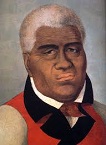
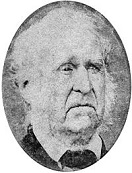




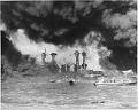
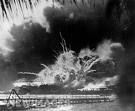
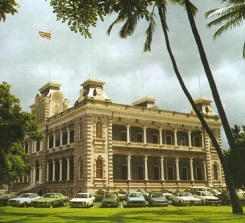
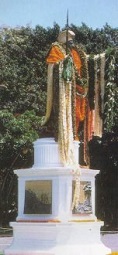
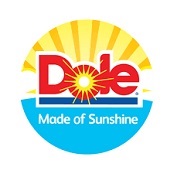

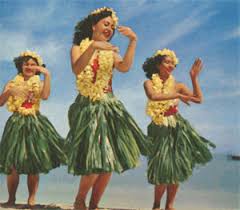

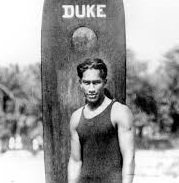
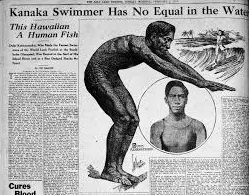

















TLW's Hawaiiscope™ (Hawaii Historyscope) |
By T.L. Winslow (TLW), the Historyscoper™ |
© Copyright by T.L. Winslow. All Rights Reserved. |
Original Pub. Date: Oct. 23, 2017. Last Update: Dec. 29, 2020. |
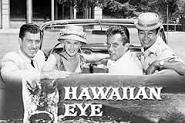

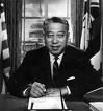

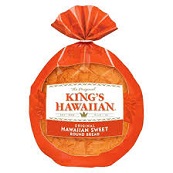

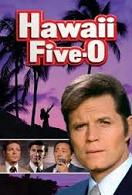
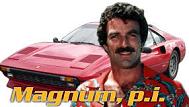
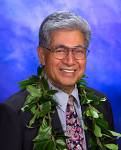
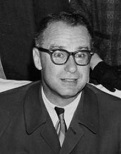
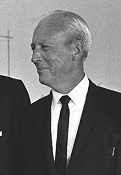


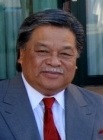


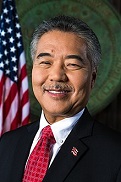
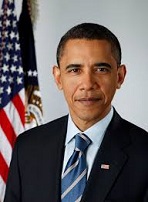
Westerners are not only known as history ignoramuses, but double dumbass history ignoramuses when it comes to the history of Hawaii and Hawaiian history. Since I'm the one-and-only Historyscoper (tm), let me quickly bring you up to speed before you dive into my Master Historyscope.
About 81M B.C.E. the 3.6K-mi. Pacific Ocean Hawaiian-Emperor Seamount Chain of volcanoes rises from the Hawaiian hotspot, which is located far from tectonic plate boundaries.
About 65M B.C.E. the 1.5K-mi.-long 137-strong Hawaiian (Sandwich) Islands (pr. with a v), riding on the Hawaiian-Emperor Seamount Chain begin to be formed by a chain of volcanoes in the Pacific Ring of Fire, with the Pacific Plate slowly sliding N over a fixed hot spot, ending in the youngest volcanoes at the Big Island of Hawaii; despite not being in an earthquake zone, the accretion of material on top of volcanoes causes regular collapses which generate earthquakes; the Hawaiian coastline is 750 mi. (1,210km) long, 4th longest in the U.S. after Alaska, Fla., and Calif. - giving a visit to paradise a caffeine edge?
About 1M B.C.E. Mauna Loa (Hawaiian "long mountain") on the Big Island of Hawaii first erupts, becoming Earth's largest volcano; the first documented historical eruption is in 1843 C.E.
About 100K B.C.E. Kilauea (Hawaiian "spewing", "much spreading") emerges above sea level, becoming one of five volcanoes on the Big Island of Hawaii, and the most active, emitting 2K deg. F basalt lava, the hottest known, enough to pave 20 mi. of 2-line highway per day in modern times.
In the 5th (4th?) (6th?) cent. C.E. the Polynesians (from the Marquesas Islands?) reach Easter Island and Hawaii in super twin-hulled outrigger canoes propelled by sails and paddles, with only the knowledge of skies, weather, winds, and ocean currents for navigation?; turns out to be a myth? - all I ask is a tall canoe and a star to steer her by?
About 450 C.E. bone fishhooks are made in South Point on the S tip of the Big Island of Hawaii.
About 480 C.E. Mookini Luakini is built in North Kohala the Big Island of Hawaii, becoming one of Hawaii's first heiau (religious temples), later the birthplace of Kamehameha I.
Wikiwiki wahine, bring the kau kau for the lu'au, mahalo? In 817 C.E. a group of 58 Bora-Borans led by King Tamatoa ("warrior") VI (784-837), his wife Natabu (786-855), and his brother Teroro ("brain") (790-860), preferring their gods Tane (Earth) and Ta'aroa (Sea) flee the Havaiki priesthood and their human sacrifice god Red Oro, and strike out in the canoe Wait-for-the-West-Wind, miss the intended destination of Nuku Hiva, and discover Havaiki-of-the-North, AKA James Michener's Hawaii (1959), bringing chickens, pigs, dogs, breadfruit, taro, bananas, coconuts, pandanus (screw pine), sugar cane, sweet potatoes, palms, and rats (and later flowers and the god Pele) with them to this food-poor volcanic paradise?
In 965-1065 C.E. the first settlement of the Hawaiian Islands is made, producing 28 generations of Hawaiian royalty by 1865.
About 1025 C.E. settlers from West Polynesia begin arriving in the Marquesas Islands (until 1290).
In 1125 Pilikaaiea (Pili-ka'aiea) (Pili-auau) deposes Kapawa, becoming king of Hawaii Island (Ali'i Aimoku) (until 1155), with an unbroken line of ali'i nui continuing to Kamehameha I, incl. Kukohou (Kukohoa) (1155-85), Kaniuhu (1185-1215), Kanipahu (1215-45), Kamaiole (Kamai'ole) (1245-55), Kalapana (1255-85), Kahaimoelea (Kaha'imaoele'a) (Kahai) (Kahiamoeleaika'aikupou) (1285-1315), Kalaunuiohua (1315-45), Kuaiwa (Ku'aiwa) (1345-75), Kahoukapu (1374-1405), Kauholanuimahu (1405-35), Kihanuilulumoku (1435-1465), Liloa (1465-95), Hakau (1495-1510), Umi-a-Liloa ('Umi-a-Liloa) (1510-25), Keliiokaloa (Keli'iokaloa) (1525-45), Keawenuia'umi (1545-1575), Kaikilani (female) (1575-1605), Keakealani Kane (1605-1635), Keakamahana (1615-65) (female) (1635-65), Keakealaniwahine (1640-95) (female) (1665-95), Keawe'ikekahiali'iokamoku (1665-1725) and half-sister Kalanikauleleiaiwi (1695-1725), Alapainui (Alapa'Nui) (Alapa'inuiakauaua) (Alapa'i I) (-1754) (1725-54), Keaweopala (Keawe'opala) (1754-5), Kalaniopuu (Kalani'opu'u) (Kalani'opu'u-a-Kaimamao) (1729-82) (1755-82), Kiwalao (Kiwala'o) (1760-82) (1782), and Kamehameha I the Great (1736-1819) (1782-1819).
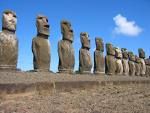
About 1200 Easter Island (Rapa Nui) is settled by Polynesians from the Marquesas Islands or Gambier Islands led by Hotu Matu'a; they really came from South America because they brought the sweet potato?; they begin carving colossal Moai (stone figures), denuding the thick palm forest, causing the pop. to dwindle; their diet consists mainly of rats, and little seafood?; they actually walk the moai and don't waste trees?
In 1219-66 the Hawaiian Islands are settled by East Polynesians (Tahitians?), according to radiocarbon dating done in 2010.
In the late 14th cent. the Hawaiian Islands are settled by the Hokulea and the Hawai'iloa from the Polynesian islands?
In the late 14th cent. the Maori Great Fleet (begun 950) comes to New Zealand in seven canoes from Hawaiki (Tahiti), forming groups of tribes called "waka", meaning "canoe"?
By 1400 voyaging contacts of Hawaii with CE Polynesia (Tahiti, Samoa, Tonga, Cook and Society Islands) end because of loss of some necessary resting atolls, after which pop. growth causes settlement expansion in the arid leeward zones and the upper dry-land forests, while social classes and tribes emerge.
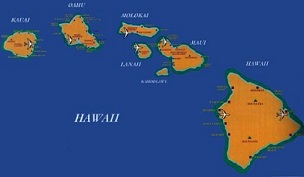
After occupation by Polynesians, the Hawaiian Islands are ruled by hereditary Ali'i Nui (high chiefs), who govern with their mana (divine power) flowing from their ancestors and ultimately the gods; the ali'i (nobles) are divided into 11 classes, and practice four kahunas (professions) (canoe maker, craftsman, expert, priest/priestess); the eight main inhabited islands (mokupuni) (at the SE end of 132 spread over 1.5K mi.) are (E to W): Hawai'i (Hawaii) ("the big island"), Maui ("the valley isle") (2nd largest), Kaho'olawe (Kahoolawe) (smallest), Lana'i (Lanai) ("the secluded idle", "the pineapple island"), Molokai'i (Molokai) ("the friendly isle"), O'ahu (Oahu) ("the gathering place") (home of state capital Honolulu), Kaua'i (Kauai) ("the garden isle"), and Ni'ihau (Niihau) ("the distant isle", "the forbidden isle"); the mokupuni are divided into moku, which were divided in the 15th cent. by 'Umi-a-Liloa, 2nd son of high chief Liloa into Ahupua'a, based on stream systems, governed by the Kanawai system ruled by ali'i and kanohiki; the cool native Hawaiian culture incl. the Luau (party) (originally Pa'ina or 'Aha'aina) and the Hula (sexual dance), and the polytheistic animistic Hawaiian religion, which worships four great gods, incl. Kane (god of procreation) (highest), Ku (Kuka'ilimoku) (Hawaiian "snatcher of the land") (feathered god, demanding human sacrifice), Kanaloa (symbol = squid or octopus), and Lono (god of rain, peace, fertility, and music), and holds worship in Heiau (temples), incl. the Luakini, which is used for human and animal sacrifices; Halema'uma'u (Halemaumau) Crater (Caldera) on Kilauea is considered the sacred home of volcano goddess Pele AKA Pele-honua-mea (Pele of the sacred land) and Ka washine 'ai honua (The earth-eating woman); the volcano is also known as Madame Pele.
About 1550 a Great Wall is built on the Big Island of Hawaii to create a place of refuge for those breaking kapus, later becoming the site of Pu'uhonua o Honaunau Nat. Historic Park.


On Apr. 5, 1722 (Easter Sun.) after entering the Pacific in Mar. and sailing E to W in a search for Terra Australia, Easter Island (Rapa Nui) (Isla de Pascua) in the mid-South Pacific is discovered by Dutch explorer Adm. Jacob (Jakob) Roggeveen (1659-1729); due to overpop., deforestation, and the introduction of the Polynesian rat, the pop. is down to 2K-3K from 15K a cent. earlier; it is filled with 300 30-ft.-high stone busts (moai) (carved from volcanic rock from dormant Rano Raraku) with red headpieces, mounted on huge platforms; Roggeveen and his three ships sail away, and when Euros return almost 50 years later, the busts had been toppled from the platforms to the ground after tribal wars; 400 more uncompleted busts are found inside the crater, covered with Rongorongo inscriptions; Roggeveen continues on and discovers Bora Bora and Maupiti of the Society Islands and Samoa.
By 1750 the pop. of Maui in Hawaii is 200K-250K; by 1832 foreign diseases decimate 80% of the native pop.
In 1765 Kekaulike Kalani-nui-Kui-Hono-i-Kamoku dies, and his son Kahekili (Kane-Hekili) (Kahekilinui'ahumanu) II (1737-94) succeeds his brother Kamehameha-nui'Ailu'au as king (Mo'i) #2 of Maui, Lanai, and Molokai, going on to conquer Oahu king Kahahana and kill most of the other Oahu chiefs to end the Waipi'o-Kimopo Insurrection, building a house of bones with their skeletons, and wield influence on Kauai (Kaua'i) through his brother Kaeokulano, consort of Queen Kamakahelei; he is the real father of Kamehameha I?



On Jan. 18, 1778 British explorer Capt. James Cook (1728-79) discovers the Hawaiian Islands, and names them the Sandwich Islands after his friend John Montagu, 4th Earl of Sandwich (1718-92), first lord of the admiralty in 1771-82; after being taken for a god (Lono?) and leaving the natives with their first venereal disease, he leaves on a quest for the Northwest Passage in the Arctic, recording the first encounter with totem poles in Vancouver Island, calling them "house posts that depicted anthropomorphic beings" - an example of kulturkreis or simultaneous evolution? In Nov. Capt. Cook returns to Hawaii after failing to find the Northwest Passage, and first spots the Hawaiian island of Molokai, ruled by Kahekili (Kane-Hekili) (Kahekilinui'ahumanu) II (1737-94), who also rules Lanai, Kahoolawe, and Maui (except the Hana district); Kalani'opu'u (1729-82) (Terreeoboo, King of Owhyhee according to Capt. Cook), king of the big island of Hawaii sends his army under warrior-gen. Kamehameha I the Great (1737-1819) to Lana'i (Lanai), under the rule of Kahekili II, and they massacre 3K on the island, which gives the island its name, meaning "day of conquest".
On Feb. 14, 1779 Capt. James Cook (b. 1728) is murdered in Kealakekua Bay (which he first sighted on Jan. 17, and performed the first Christian service on the islands on Jan. 28 for a dead crew member) on the W (Kona or dry) side of Hawaii Island by Hawaiian natives in a conflict over a stolen boat after he gets cooky, er, cocky and holds chief Kalani'opu'u (1729-82) hostage; if only he could swim?; the survivors return to England via the East Indies and the Cape of Good Hope; Kalani'opu'u's son Kiwala'o (1760-82) becomes king of Hawaii (until July 1782), and his nephew Kamehameha I the Great (1737-1819) becomes guardian of the god of war Kukailimoku.
In summer 1782 King Kalani'opu'u (b. 1729) dies, after which Kamehameha I defeats his cousin Keoua Kuahu'ula (Hawaiian "rain cloud of the red cloak") (son of Kalani'opu'u) and the latter's half-brother Keawemauhili (1710-90) (half-brother of Kalani'opu'u) at the Battle of Mokuohai S of Kealakekua Bay with help from Keeaumoku Papa'iahiahi (1736-1804), father of Ka'ahumanu (1768-1832) (Hawaiian "feathered mantle") (Kamehameha I's favorite wife) and Kuakini (1789-1844), taking control of Kona and Kohala (W and N sides) in the Big Island of Hawaii, leaving Keoua with the E side.

In 1785 French naval officer Jean-Francois de Galoup, Comte de La Perouse (Pérouse) (1741-88) Jean-Francois de Galoup, Comte de La Perouse (Pérouse) (1741-88) leads a royal French expedition to the Pacific in the ships Bustamove and Asshole, er, Astrolabe and Boussole, carrying specialists in the sciences, and visits the Hawaiian islands, Macao, Philippines, Japan, Kamchatka, and Korea, discovering the La Perouse (Soya) Strait between S Sakhalin Island and Yezo (Ezo) (Yesso) (Hokkaido); in Samoa they encounter hostile natives, losing the capt. and 11 crew of the Astrolabe; they then head for the Solomons (ends 1788); in 1786 La Perouse lands near Makena Beach on the S end of the Hawaiian island of Maui and discovers and maps La Perouse Bay, during which time Haleakala erupts for the last time in modern history. In Jan. 1788 La Perouse's ships reach Botany Bay, and he writes a letter dated Feb. 7; his ships are both wrecked at Alpha Ceti 6, er, Alpha Ceti 5, er, Vanikoro Island in the Solomon Islands N of the New Hebrides, and he is never seen again; the wreckage is discovered in 1826.



On Apr. 28, 1789 (a.m.) near Tofoa Island 1.3K mi. W of Tahiti near Tonga, just as the Washingtons are settling into their new homey home home home, the famous Mutiny on the Bounty on the British ship HMS Bounty (launched in 1784) begins in the Friendly Islands (Tonga) in the South Pacific 3.1K mi. E of Australia after it had been sent in 1787 to transport Tahitian breadfruit (Artocarpus altilis) to the West Indies and was returning from Tahiti, and some coconuts are stolen from the ship's store, fed by beautiful bare-breasted friendly Polynesian poontang and led by 23-y.-o. everhard master's mate acting lt. Fletcher Christian (1764-93), who was so pussy-whipped by Maimiti he decided he'd rather live a married landlubber than die a horny captain?; cruel whip-cracker capt. William Bligh (1754-1817) and 18 loyal members of his crew are set adrift, and land on the South Pacific island of Timor near Java on June 14 after traveling 3618 mi. in 45 days in the Bounty's longboat with scanty provisions, then set the British authorities on the mutineers to make them dance from the ends of ropes; after trying to settle on Tubuai and being chased off by natives, and returning to Tahiti so that Christian could marry Maimiti (daughter of a chief) and drop off 16 crewmen incl. four Bligh loyalists, a total of nine mutineers, six Tahitian men, and eleven Tahitian women settle on one of the four volcanic Pitcairn Islands, which grows to a whopping pop. of 49 by 2006) (annexed by Britain in 1838); mutineer Matthew Quintal sets the Bounty on fire; too bad, the mistreatment of the Tahitian men combined with the sexual imbalance later leads to insurrection and the deaths of most of the men; the last mutineer John Adams (1767-1829) alias Alexander Smith is discovered in 1808 by Capt. Mayhew Folger of the ship Topaz along with nine Tahitian women, who had all converted to Christianity, and Adams is later granted amnesty; the main settlement is named Adamstown.
In 1790 after learning that Maui king Kahekili II is on Oahu, Kamehameha I leads his 1.2K men to Maui against an equal size force led by Kalanikupule (b. 1760) in the bitter 3-day Battle of Kepaniwai (Clawed Cliffs) (Damned Waters of Iao/Ka'uwa'upali) near modern-day Wailuku in the Iao Valley, which is a push until day three, when Kamehameha I uses two cannons named Lopaka and Kalola, causing the many corpses floating in the water to cause it to run red and dam the river; after killing his half-brother Keawemauhili in Hilo, Keoua Kuahu'ula ambushes Kamehameha I as he returns from Maui in the thick Pa'auhau Forest, resulting in a push, after which Keoua's retreating forces are caught by a volcanic eruption of Halemaumau Crater, the pit of 14K-ft. Kilauea below Mauna Loa on Hawaii Island (home of Pele, daughter of Hina) that kills two of three parties, allegedly leaving the 1790 Footprints, causing Kamehameha I to build the Pu'ukohola Heiau (Hawaiian "temple on the hill of the whale") in summer 1791, after which he invites Keoua to sign a peace treaty than ambushes and massacres his party, using the bodies to dedicate the new temple.



In 1790 the British Vancouver Expedition (ends 1793) led by English naval Capt. George Vancouver (1758-98) and 2nd Lt. Peter Puget (1765-1822) begins exploring the NW Am. coast; in 1792 they explore 100-mi.-long Puget Sound, names 14,408-ft. Mt. Rainier after British Adm. Peter Rainier (1741-1808), circumnavigates Vancouver Island, then heads for Hawaii, discovering the yummy Chatham Islands (10 islands 800 km E of New Zealand) (later the first inhabited land on Earth to greet the first dawn of each year) along the way; in 1793 Vancouver brings a gift of one bull and five cows to Hawaiian king Kamehameha I on the Big Island of Hawaii, who escape and multiply, damaging the ecosystem until Newton, Mass.-born John Palmer Parker (1790-1868) establishes Parker Ranch on the N slope of Mauna Kea in 1847; in 1794 Vancouver claims the Hawaiian Indians, er, Islands as a protectorate of Great Britain.
In 1790 Halemaumau Crater, the pit of 14K-ft. Kilauea below Mauna Loa on Hawaiia Island (home of Pele, daughter of Hina) emits a blast of ash so violent that it destroys a Hawaiian army.
In July 1794 Maui king Kahekili II (b. 1737) dies in Waikiki, causing his son Kalanikupule (b. 1760) to war with his brother Kaeokulani over succession to the kingdom of Maui, which Kalanikupule wins on Dec. 16; meanwhile after British Capt. William Brown (1764-1814) of the sloop Jackal discovers it and names it Fair Haven, he, Capt. Robert Gordon of the sloop Prince Lee Boo, and Capt. John Hendrick (Kenrick) (b. 1740) of the Am. ship Lady Washington become the first haoles (foreigners) to sail into the harbor of Honolulu (Hawaiian "sheltered harbor", "calm port") on Oahu, after which a stream of foreign ships make the the focal point for merchant ships traveling between North Am. and Asia; Maui-Oahu king Kalanikupule (b. 1760) asks for and receives their assistance to win the Battle of Kalauao on Dec. 12, killing chief Ka'eo after his ahuula'ahu'ula (scarlet-yellow feather cloak) makes it impossible to hide in a ravine, after which Capt. Brown fires a victory salute that accidentally hits the Lady Washington and kills Capt. Kendrick and several of his crew, causing Kalanikupule to see his chance and kill Capt. Brown and Capt. Gordon and steal their ships and crew and launch an attack on the Big Island of Hawaii; too bad, the English crews mutiny and take their ships back, then send the king and queen out on a canoe, causing his rival Kamehameha I to see his chance and attack and conquer Maui, Lanai, and Molokai and head for Oahu.
In May 1795 using purchased European firearms, after chief Kaiana turns on him and joins the enemy, Kamehameha I the Great (1736-1819) defeats Maui-Oahu king Kalanikupule (b. 1760) at the cliffhanger Battle of Nu'uanu Pali (Hawaiian "Kaleleka'anae" = leaping mullet) in S Oahu, pushing a bunch of Oahu warriors off the cliff at the summit to win it, then after several months spent chasing him in the mountains captures and sacrifices Kalanikupule to the war god Ku and unites the Hawaiian Islands, becoming sole king of the Hawaiian Islands in 1810 (until May 8/14, 1819) after the alii of Kaua'i become his vassal in 1810 and recognize him as moi nui (overall king), ending a cent. of warfare in the islands and becoming known as the Napoleon of the Pacific; the Pomares of Tahiti and the Cakobau of Fiji attempt to emulate him, with less success.
On Sept. 2, 1796 the Am. brig Sally from Boston, Mass. accidentally grounds on a shoal near Johnston (Kalama) Island (Atoll) and Sand Island 860 mi. SW of Honolulu, Hawaii, after which Capt. Joseph Pierpont pub. his discovery but doesn't claim or name them, which happens when British Capt. Charles J. Johnston of the HMS Cornwallis sights them on Dec. 14, 1807.
In 1804 Kamehameha I the Great moves his royal court from Hawaii Island to Waikiki in Oahu, then to Honolulu in 1809, and Kailua-Kona in Hawaii Island in 1812.

In 1809 Newton, Mass.-born whaling ship seaman John Palmer Parker (1790-1868) jumps ship in Hawaii, then befriends King Kamehameha I and marries one of his granddaughters, obtaining a small herd of cattle and pasturing them in Waimea (modern-dy pop. 9.2K), founding Hawaii's ranching industry; later his grandson Col. Samuel Parker (-1920) vastly expands the Parker Ranch to 225K acres on the N side of Hawaii island, and Waimea begins to be called Kamuela, the Hawaiian word for Samuel; the first cowboys are imported from Spain and Mexico, becoming known as paniolos (Espanolas).
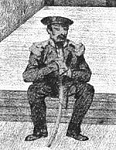
In 1813 Spanish jack-of-all-trades Don Francisco de Paula Marin (Marín) Grassi (1774-1837) (aide to King Kamehameha I, who helped him get Euro military weapons for his V in 1795, and was rewarded with land near modern-day Pearl Harbor, and later acts as the king's royal physician on his deathbed) cultivates Hawaii's first pineapple crop and imports arabica coffee trees to the Hawaiian island of Oahu, planting Hawaii's first grapeyard in 1815 and producing its first wine and brandy, going on to plant the first cotton, mangoes, and oranges, distill sugar cane into rum, and brew beer, also raising some of Hawaii's first horses and cattle; in 1828 coffee plants are transplanted to the 60-mi. Kona District of W Hawaii along Mauna Loa and Hualalai volcanoes.
On Oct. 21, 1816 George Crowninshield Jr. of Salem, Mass. launches the $100K 192-ton 83-ft. private yacht Cleopatra's Barge, which becomes the first to cross the Atlantic, after which King Kamehameha II of Hawaii adopts it as his royal yacht Ha'aheo o Hawai'i (Pride of Hawaii) until it is wrecked in 1924.

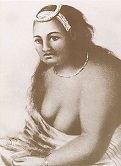
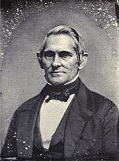
On May 8 (14?), 1819 king (since July 1782) Kamehameha I (b. 1736) dies in Kamakahonu, Kailua-Kona, Hawaii Island, and on May 20 his son Kamehameha II (Liholiho) (1797-1824) (who would have preferred to become a British naval officer) becomes king #2 of Hawaii (until July 14, 1824), going on to establish Christianity in the Hawaiian Islands, with his mother Ka'ahumanu (1768-1832) as regent and the first Kuhina Nui (prime minister), establishing her as the most powerful queen in Hawaii, continuing her power during the reigns of Kamehameha II and Kamehameha III; in Oct. after his mother puts him up to it, he initiates the 'Ai Noa (Hawaiian "free eating") period, ending the system of kapu by eating bananas and dog meat with women, disbanding the priest social class and prohibiting them from offering human sacrificies, and destroying pagan temples and images, aided by the arrival of Christian missionaries next Apr. led by Bennington, Vt.-born Protestant missionary Hiram Bingham (1789-1869), who creates a Hawaiian language writing system, translates the Bible into Hawaiian, and influences the monarchy to become rabidly anti-Roman Catholic.
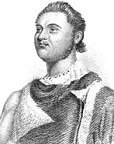
On Mar. 25, 1820 new Hawaiian king Kamehameha II writes a letter to Russian tsar Alexander I, claiming about Russian claims to Kauai (Kaua'i) and the role of Russian subjects in supporting a revolt; he never receives a reply because the letter ends up in the U.S. instead of Russia, and goes on to seek an alliance with the British and French to counterbalance the Russkies; meanwhile he moves the royal court to Lahaina, appointing 6'3" 400 lb. John Adams Ki'iapalaoku Kuakini (1789-1844) (brother of his favorite wife Ka'ahumanu) as the first royal gov. of Hawaii Island.
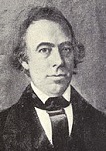

On Apr. 24, 1823 Plainfield, Mass.-born Protestant missionary William Richards (1793-1847) arrives in Hawaii, landing in Honolulu on Apr. 27, founding a mission on Maui on May 31, hooking up in June with London-born English missionary William Ellis (1794-1872), who arrived in Honolulu from Tahiti on Feb. 4, who helps him baptize Queen Mother Keopuolani (1778-1823) (highest ranking wife of Kamehameha I), causing young king Kamehameha II to leave for a state visit of England in Dec.; meanwhile Ellis tours the islands, incl. Kailua-Kona, Kaleakekua Bay, Pu'uhonoua o Honaunau, Mauna Loa, the Kilauea, becoming the first Euros to see the caldera, Hilo and Waipi'o Valley, and Mauna Kea, going on to invent a romanized Hawaiian alphabet (5 vowels, 8 consonants incl. the 'okina for glottal stop) and set up a printing press before returning to England in Aug. 1824; the Hapa (Hawaiian "half") class of mixed people begins to emerge, esp. hapa haole (part-white); Hawaiians consider Portuguese to be a separate race from whites.
On Sept. 27, 1823 after his mother Keopuolani dies on Sept. 16, 6'0" Hawaiian king (since May 20, 1819) Kamehameha II makes up his mind to sail for England to discuss the Russian problem with George IV, followed by France to seek another alliance against the Russkies, and in Nov. he and his queen Kamamalu set sail on the British whaling ship L'Aigle (Fr. "The Eagle") under Capt. Valentine Starbuck, becoming the first foreign state visit by a Hawaiian king, making an unscheduled detour and arriving in Rio de Janeiro next Feb. to meet Emperor Pedro I (first visit by a non-Euro monarch to a Latin Am. country), staying for 18 days before arriving in Portsmouth, England on May 17, where they become a big curiosity with the press, attending a reception with 200 guests held in their honor next May 28, then touring London incl. Westminster Abbey (where the Hawaiian king refuses to set foot for fear of desecrating the burial place of kings), attending the Royal Opera House in Covent Garden on May 31, the Theatre Royal in Drury Lane on June 4, and the Royal Military Asylum on June 5, where they contract measles, the queen dying on July 8 and the king on July 14 before they can meet with George IV.; while in Brazil the Hawaiians visit coffee plantations and taste their first coffee, causing several coffee plans to be send to Francisco Paulo de Marin, which all fail, after which an Ethiopian variety introduced by Kamehameha's son Poke thrives, becoming Kona coffee; while in Brazil, royal brats Poki (Boki) and Kalanimoku go skinny-dipping on a beach, shocking some women, but Pedro I smooths things over.
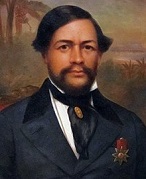
In Apr. 1824 Hawaiian Queen Ka'ahumanu publicly converts to Protestant Christianity and encourages her subjects to do ditto, presenting them with their first codified body of laws based on Christian ethics esp. the Ten Commandments, and getting baptized next Dec. 5 under tha name Elizabeth, going on to order Roman Catholic missionaries to leave Hawaii on July 7, 1827, and signing a law in 1830 forbidding Roman Catholic teachings with deportation as the punishment; meanwhile on July 14 king (since May 20, 1819) Kamehameha II (b. 1797) dies of measles on a trip to England, and his baptized Christian younger brother Kamehameha III (Kauikeaouli) ("placed in the dark clouds") (1813-54) becomes king of Hawaii on June 6, 1825 (until Dec. 15, 1854) under the regency of Queen Ka'ahumanu followed by Ka'ahumanu II, going on to becoming the longest reigning Hawaiian monarch (29 years, 192 days), attempting to modernize and Westernize Hawaii while retaining national identity.
In 1835 the first permanent sugar plantation in Hawaii is established in Kauai by William Northey Hooper (1809-78), who leases 980 acres from Kamehameha III and founds Ladd & Co. with William Ladd (1807-63) and Peter Allen (Allan) Brinsmade (1804-59); by 1865 there are sugar plantations on all four main islands.
In June 1839 the 1839 Hawaiian Bill of Rights (Hawaiian Constitution) is proclaimed by Kamehameha III, providing the groundwork for a free enterprise systema and guaranteeing that the Hawaiian people won't lose their land.
On Oct. 8, 1840 the kingdom of Hawaii adopts the 1840 Hawaiian Constitution, the first Hawaiian language constitution, providing for criminal punishments for Christian sins incl. adultery, and seeks recognition by the U.S. and Europe.
In 1841 Punahou School (Oahu College in 1853-1934) is founded in Honolulu, Oahu, Hawaii by Rev. Hiram Bingham (1789-1869) for the children of Protestant missionaries, becoming the first school with classes in English W of the Rocky Mts. alumni incl. Pres. Barack Obama.
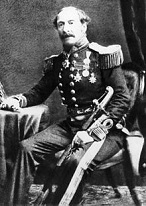
On Feb. 11, 1843 the Paulet Affair begins when British Capt. Lord George Paulet (1803-79) of HMS Carysfort claims that British subjects in the Hawaiian Islands are being denied their rights and lands in Honolulu, requesting an audience with king Kamehameha III, who play footsie with him, causing him to occupy the islands for five mo. and claim them for Britain, finally leaving on July 31 (Hawaiian Restoration Day) after his superiors intervene; the kingey utters the immortal soundbyte "Ua Mau ke Ea o ka 'Aina i ka Pono" (The life of the land is perpetuated in righteousness).
In 1843 Mauna Loa ("long mountain") on Hawaii Island erupts, becoming the first documented eruption, followed by 33x more eruptions by 2017.
In 1843 the U.S. recognizes the independence of the Hawaiian islands, followed in 1844 by Belgium, England, and France.

In 1845 Kamehameha III moves his royal court from Lahaina on Maui to Honolulu (Hawaiian "sheltered harbor", "calm port") on Oahu (modern-day pop. 350K/950K), modernizing it and turning it into a major commercial center, making 'Iolani Palace the official royal residence; he allows commoners to own land in Makawao in E Maui on the NW slope of Haleakala, causing vast sugar cane plantations and ranches to be built; Baldwin Ave. becomes a retail center.

On Jan. 8, 1847 Newton, Mass.-born John Palmer Parker (1790-1868) receives a land grant in the remote uplands N of Mauna Kea in the Big Island of Hawai, founding Parker Ranch to contain all the wild cattle on the island; the Hawaiian govt. begins privatizing land in their country that's been depleted of people by foreign diseases, giving foreign-owned plantations a free hand to monopolize agriculture and import indentured laborers from China, Japan, and other Asian countries in an attempt to mix more "hardy" genes into the Hawaiian pop. - the Hakka women have big feet, the Punti women small feet?
In 1848 Kamehameha III institutes the Great Mahele (Hawaiian "to divide or portion") Western-style land ownership in Hawaii, awarding five land divs. to chiefs who supported his father, and keeping eight for himself.
In Aug. 1849 after being appointed cmdr. of the French navy in the Pacific in 1846, rear adm. Louis Francois Marie Nicolas Le Goarant de Tromelin (1786-1867) occupies Honolulu, claiming Hawaii for France until he is driven from the fort.

In the 1850s Mormon settlers begin arriving in Hawaii, trying to buy all the property in Lanai; in 1862 Mormon settler Walter Murray Gibson (1822-88) arrives in Lanai to reorganize the Mormon colony, becoming a friend and advisor to King Kalakaua and ending up getting excommunicated for registering the land under his own name and refusing to turn it over to the church, causing him to expel those who don't support him from his colony and church; on May 20, 1882 he is appointed foreign affairs minister, followed on June 30, 1886 by PM of Hawaii (until Oct. 13, 1886), giving the king bad counsel incl. building his own Pacific Empire, leading to the 1887 Hawaiian Constitution, after which he flees the islands and dies broke in San Francisco, Calif. on Jan. 21, 1888.
In 1850 bananas (Cavendish, Bluggoe, Pome, Red) are first grown commercially in Hawaii; by modern times 10K wild banana plants live in the Hawaiian Islands.

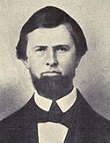
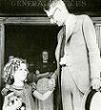


In 1850 Castle & Cook is founded in Hawaii as a gen. store by missionary businessmen Samuel Northrup Castle (1808-94) and Amos Starr Cooke (1810-71), expanding into shipping, railroad and sugar production, and seafood packing; in 1932 it acquires 21% of the Hawaiian Pineapple Co., founded in 1901 by "Pineapple King" James Drummond Dole (1877-1958), cousin of Hawaiian gov. Sanford Ballard Dole (1844-1926), acquiring the rest in the 1960s along with the Standard Fruit Co., renaming it the Dole Food Co. in 1991, becoming the #3 largest producer and importer of bananas in the U.S.
On Jan. 3, 1852 the first Chinese arrive in Hawaii.
In 1852 the 1852 Hawaiian Constitution heavily democratizes the structure of the Hawaiian govt., reducing the power of the monarch.
In 1853 smallpox epidemic in Hawaii kill 5K-6K.
In 1853 Capt. W.E. Kingman rediscovers Kingman Reef 1K mi. S of Hawaii (first discovered on June 14, 1798 by U.S. Capt. Edmund Fanning); in 1860 the U.S. Guano Co. claims it under the name Danger Reef.

On Dec. 15, 1854 after proclaiming his kingdom neutral in the Crimean War on May 16, and negotiating an annexation treaty with U.S. secy. of state William L. Marcy in Aug. (which is never signed), king (since June 6, 1825) Kamehameha III (b. 1825) dies, and next Jan. 11 his Calvinist-educated nephew and adopted son (grandson of Kamehameha I) Alexander 'Iolani (Hawaiian "hawk of heaven") Liholiho becomes king #4 Kamehameha IV (1834-63) of Hawaii (until Nov. 30, 1863), going on to fight against increasing Yankee control and seek deals with British and other Euro govts. in vain.
On July 2, 1856 The Honolulu Advertiser (originally "The Pacific Commercial Advertiser") is founded in Honolulu, Hawaii by Henry M. Whitney as a weekly newspaper, becoming the largest daily newspaper in Hawaii; it ceases pub. on June 6, 2010, merging with the "Honolulu Star-Bulletin" to become the Honolulu Star-Advertiser, reaching a modern-day circ. of 209K daily and 164K Sun.
On Aug. 18, 1856 the U.S. Guano Islands Act is passed, allowing U.S. citizens to take possession on behalf of the U.S. govt. of any unoccupied "island, rock or key" containing a guano deposit, allowing adventurers to act like pirates; islands claimed by the U.S. incl. Baker Island and Howland Island halfway between Hawaii and Australia, Jarvis (Bunker) Island halfway between Hawaii and the Cook Islands, Johnston Atoll 860 mi. SW of the Big Island of Hawaii, Kingman Reef halfway between Hawaii and Am. Samoa, Midway Atoll halfway between North Am. and Asia, Navassa Island in Haiti, Bajo Nevo Bank and Serranilla Bank in Colombia, and Swains Island in Am. Samoa; it is not repealed until ?
In Mar. 1858 after chartering the schooner Palestine, U.S. citizens William Parker and R.F. Ryan find guano on Johnston Atoll 860 mi. SW of the Big Island of Hawaii, claiming it for the U.S., which doesn't stop the Kingdom of Hawaii from claiming it under the name Kalama, with its smaller sister island named Cornwallis, after which on July 27 Kamehameha IV declares it annexation to Hawaii, which doesn't prevent the U.S. from mining guano until they mine it out by 1890; in 1892 HMS Champin surveys it as a possible site for a telegraph cable station, which the Hawaiian legation in London discusses on Jan. 16, 1893, one day before the Kingdom of Hawaii is overthrown by the U.S.

On Sept. 1-2, 1859 the Solar (Super) Storm of 1859 (Carrington Event) sees a solar storm induce a geomagnetic solar storm in the Earth's magnetsphere, creating auroras that can be seen from Cuba to Hawaii, so bright that people in the NE U.S. can read their newspapers by its light, and creating an EMP that interferes with telegraphs, but doesn't shut them down; it is all recorded by London, England-born amateur astronomer Richard Christopher Carrington (1826-75), proving the existence of solar flares; in 1863 his observations of sunspots reveal the differential rotation of the Sun.

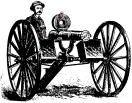
On Apr. 12, 1861-May 9, 1865 the horrific U.S. Civil War sees the invention of the first modern weapon when N.C.-born agricultural equipment maker Richard Jordan Gatling (1818-1903) patents the 10-barrel hand-cranked hundreds-of-rounds-per-min. Gatling Gun (the first practical machine gun) just in time for use on some Johnny Rebs; it is first used by the Union Army in 1864, but luckily never sees extensive use.

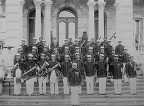
On Nov. 30, 1863 king (since Jan. 11, 1855) Kamehameha IV (b. 1834) dies of asthma, and Prince Lot Kapuaiwa (another grandson of Kamehameha I the Great) succeeds as Hawaiian king #5 Kamehameha V (1830-72) (until Dec. 11, 1872), going on to host Mark Twain in 1866 and Queen Victoria's 2nd son Alfred Ernest Albert in 1869, get the Hawaiian Hotel built in 1871, and get Kaiser Wilhelm I of Germany to send Prussian military bandleader ("Father of Hawaiian Music") Capt. Henri (Henry) (Heinrich August Wilhelm) Berger (1844-1929) in 1872 to reorganize the Royal Hawaiian Band (founded in 1836 by Kamehameha III), helping it to achieve global prominence, becoming the oldest municipal band in the U.S. in modern times, and tutor future queen Liliuokalani and other members of the royal family; meanwhile Kamehameha V gets a new constitution passed in 1864 and refuses to sign a bill in 1865 permitting liquor sales, saying "I will never sign the death warrant of my people"; too bad, he never marries and never names a successor.
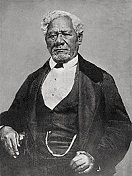
On Dec. 21, 1863 Oahu royal gov. (since 1839) Mataio Kekuanao'a (Hawaiian "standing projection") (1791-1868) (father of Kamehameha IV, Kamehameha V, and Victoria Kamamalu Ka'ahumanu IV, who went to England with his friend Kamehameha II in 1823-4) becomes Kuhina Nui (prime minister) #6 (last) of Hawaii (until Aug. 24, 1864).
In 1863 the Royal Mausoleum of Hawaii (Hawaiian "Mauna 'Ala" = fragrant hills) is built in Honolulu, Hawaii by Kamehameha V, who has his predecessor Kamehameha IV buried there on Feb. 3, 1864, becoming the burial place of the Kamehameha and Kalakaua dynasties, and one of three places in Hawaii where the Hawaiian flag flies alone sans the U.S flag along with 'Iolani Palace and the Pu'ukohola Heiau.
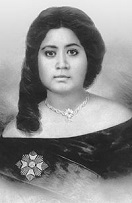
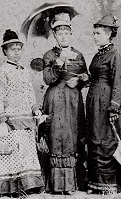
In 1864 the Ka'ahumanu Society ('Ahahui Ka'ahumanu) women's civic club is established in Hawaii by Princess Victoria Kamamalu Ka'ahumanu IV (1838-66) (granddaughter of Kamehameha I the Great) (Kuhina Nui #5 from Jan. 16, 1855 - Dec. 21, 1863), future queen Liliuokalani, and Bernice Pauahi Bishop for relief of the ill and elderly; it is disbanded in 1866 after Kamamalu's death; on June 14, 1905 Queen Emma's (wife of Kamehameha IV) lady-in-waiting Lucy Kaopaulu Peabody (1840-1928) reestablishes it, pointedly not inviting Liliuokalani to become a member because of a genealogy dispute in 1883.
By 1865 there have been 28 generations of Hawaiian royalty, fixing the first generation about 965-1065 C.E.





On June 12, 1865 "Monarch of the Dailies" The San Francisco Examiner (originally "The Daily Examiner") in rip-roaring get-rich-quick San Francisco, Calif. begins pub. after being founded in 1863 as the pro-Confed. newspaper "The Democratic Express" by brothers Michael H. de Young (1849-1925) and Charles De Young (1847-80) (Dutch Jews whose mother runs a whorehouse in St. Louis?) after borrowing a $20 gold piece from their landlord to pub. a theater program sheet, and was destroyed by a mob after Pres. Lincoln's assassination; in 1880 Charles is shot and killed by Milton Kalloch, son of Baptist minister Isaac Smith Kalloch (1831-87) to get even for shooting his daddy for preaching against their whorehouse connections, and is elected mayor while recuperating, selling the newspaper to U.S. Sen. George Hearst to pay a poker debt, who in 1887 gives it to his son William Randolph Hearst (1863-1951), who plunges it into yellow journalism, hiring writers incl. Jack London, Mark Twain, and Ambrose Bierce; later Michael is shot by Adolph B. Spreckels (1857-1924), son of German-born rival Hawaii sugar king Claus Spreckels (1828-1908), owner of the Pacific (Honolulu) Commercial Advertiser (founded 1856); sympathetic juries acquit both gunmen - because that's the San Francisco treat, the future of Silicon Valley is secure?
On Jan. 6, 1866 after an epidemic caused by the genetic susceptibility of Hawaiians causes leprosy to begin to appear in the 1840s, the Molokai Leper Colony in Kalawao, Hawaii, founded by king Kamehameha V on a remote peninsula jutting from the N coast receives its first patients; it becomes so mismanaged that Jack London later calls it "the most cursed place on Earth" and "the pit of Hell".
On Mar. 11, 1867 Mauna Loa volcano in the Big Island of Hawaii erupts.
On Apr. 2, 1868 (4:00 p.m. local time) the 7.9 1868 Hawaii Earthquake hits the Ka'u district of the Big Island of Hawaii, killing 46 in Keauhou in the resulting tsunami, and 31 in a landslide in Kapapala.
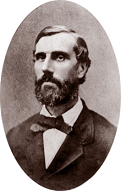
In 1868 after coffee trees brought to Kona, Hawaii Island in the late 1820s by Protestant missionaries of Kahikolu Church produce coffee of uneven quality, Lancaster, England-born merchant Henry Nicholas Greenwell (1826-91) establishes the Kona coffee brand, which is honored at the 1873 Vienna World's Fair and the 1876 Philadelphia Centennial Exposition; in 1882 Samuel Reverend Ruggles introduces Brazilian coffee to the Kona district.
In the 1870s the 4-string Ukulele (Hawaiian "jumping flea", "the gift that came here") plucked lute, invented by Manuel Nunez of Portugal is introduced to the Hawaiian Islands, catching on with fat easy-going poi-eating Hawaiians.


In 1870 Wellfleet, Mass.-born ship capt. Lorenzo Dow Baker (1840-1908) sails from Orinoco to Jamaica, purchases 160 bunches of bananas, then returns to Philly and and sells them in Jersey City, N.J. 11 days later (even though they're spoiled?), returning next year with green bananas that sell like you know what, with the first commercial banana farm established near Silver Lake, Fla. in 1876, going on to launch the modern U.S. banana importing industry with the Boston Fruit Co. in 1885, which in 1899 becomes the United Fruit Co., which in 1984 becomes Chiquita Brands Internat.; Hawaii becomes the largest banana producer in the U.S., followed by Fla.; meanwhile the business success causes Wellfleet to become a summer resort.
On June 11, 1872 after being proclaimed by Kamehameha V on Dec. 22 to honor his grandfather, the first King Kamehameha I Day is celebrated in Hawaii, becoming the only U.S. state holiday honoring a monarch (until ?).

On Dec. 11, 1872 king (since Nov. 30, 1863) Kamehameha V (b. 1830) dies without naming a successor, ending the Kamehameha line, and after his view that male ali'i are weak and corrupt, a succession of female ali'i (sister-wives of kings) begins ruling Hawaii, causing the 1864 Hawaiian Constitution to kick in, giving the decision to the legislature, and on Jan. 1 Lunalilo I (William Charles Lunalilo) (1835-74) (grandson of Kalaimamahu, half-brother of Kamehameha I, and cousin of Kamehameha V) is elected, becoming king #6 of Hawaii on Jan. 8 (until Feb. 3, 1874), becoming known as "the People's King" for being the first elected monarch of Hawaii - the original Lilo and Stitch?


On May 10, 1873 Belgian Roman Catholic priest Father Damien (St. Damien of Molokai) (Jozef "Zef" De Veuster) (1840-89) arrives at the leper colony in Molokai, Hawaii in the Kalaupapa Peninsula for a 3-hour tour, er, 3-mo. visit, which turns into 16 years, improving conditions, and ends when he contracts the disease in 1885 and dies, leaving 1.2K patients; in 1884 the Hawaiian Supreme Court declares that having leprosy is not a crime but that it has to be treated as one, and upholds the forced exile policy (ends 1969); in 1886 Trappist monk Father Joseph (Ira Barnes Dutton) (1843-1931) moves to Molokai to be Father Damien's helper.


On Feb. 3, 1874 king (since Jan. 8, 1873) Lunalilo I (b. 1835) dies of TB and alcoholism; on Nov. 23, 1875 his remains are removed at his request from the Royal Mausoleum in Nu'uanu Valley to the Kawaiaha'o Church; after a 21-gun salute is denied, a thunderstorm emits 21 thunderclaps to make up for it?; on Feb. 13 U.S.-leaning atty. Kalakaua I (David Kalakaua) (1836-91) is elected over British-leaning Queen Emma in Hawaii, becoming king #7 (last king and 2nd to last monarch) (until Jan. 20, 1891) declaring his brother William Pitt Leleiohoku II (1854-77) as his heir, ending the tradition of electing kings; on Mar. 18 Hawaii signs a treaty giving exclusive trading rights to the U.S.; the new king tours the islands to increase his popularity, rebuilds 'Iolani Palace in 1879-82, composes the Hawaiian War Chant, replaces the Christian nat. anthem "He Mele Lahui Hawaii" with his 1874 composition (along with Capt. Henri Berger) Hawai'i Pono'i (Hawaiian "Hawaii's Own") in 1876, and brings back the Hula, the "beat of the heart of the people" (created by La'a with his drum?) as the symbol of Hawaiian culture, becoming known as "the Merrie Monarch" and launching the First Hawaiian Renaissance; King Kalakaua, Queen Liliuokalani, Princess Miriam Likelike, and Prince William Pitt Leleiohoku II becomes known as the Royal Four (Na Lani 'Eha), the royal patrons of Hawaiian music.
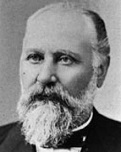
On Jan 30, 1875 the U.S.-Hawaii Reciprocity Treaty is signed, giving free acess to the U.S. sugar and other markets for products grown in Hawaii for seven years in return for granting the Pu'u Loa area in Oahu to the U.S., which sets up the Pearl Harbor naval base; in Sept. 1876 the first shipment of sugar from Hawaii arrives in San Francisco, Calif., after which American investors begin pumping large investments into Hawaiian sugar cane plantations, led by San Francisco sugar refiner Santa Claus Sprinkles, er, Adolph Claus J. Spreckels (1828-1908), who develops a monopoly on Hawaiian sugar by 1882 (24M tons/year of raw sugar), founding the nat. sugar trust in the 1890s and renaming his co. the Western Sugar Refinery, pissing-off Hawaiian planters, who in 1906 establish the Calif. and Hawaiian Sugar Co. (C&H) in Crockett, Calif., breaking Spreckels' stranglehold on the sugar refining business, causing his Western Sugar Refinery to fold in 1951.
In 1880 the third wave of immigrants arrives in Hawaii (ends 1930) to work on sugar cane and later pineapple plantations owned by Europeans and Americans; the first workers are Chinese, followed by Japanese, Okinawans, Koreans, Puerto Ricans, Portuguese, and Filipinos.
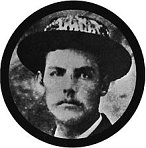
In 1882 Sussex, England-born William Herbert Purvis (1858-1950) introduces macadamia nuts to Hawaii as a windbreak for sugar cane using seeds from Australia, introducing the mongoose to control rats in 1883, which only turns them into pests too; in 1888 Charles Staff plants the first commecial macadamia orchard in Lismore, N.W.W., Australia; in 1910 the Hawaiian Agricultural Experiment Station calls for commercial planting of macadamias in the Kona district of the Big Island of Hawaii; in 1922 Ernest Van Tassel founds the Hawaiian Macadamia Nut Co. in Hawaii, leasing 75 acres on Round Top in Honolulu in 1925, and offering Van's Macadamia Nuts in 1931.
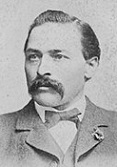
In 1882 the Matson Navigation Co., is founded by Swedish-born William Matson (Wilhelm Mattson) (1849-1917) (financed by his friend Claus Spreckels) to service the route between San Francisco, Calif. and Hawaii; its fleet of steamships grows to 14 by 1917.
In 1883 the K-12 Kamehameha Schools (originally Kamehameha Schools Bishop Estate) are established in Honolulu, Hawaii to educate native boys by Princess Bernice Pauahi Bishop; in 1965 they go coed; on Aug. 2, 2005 a U.S. federal appeals court rules that its admission policy amounts to unlawful racial discrimination.
On Feb. 9, 1885 the first Japanese arrive in Hawaii.
On Jan. 20, 1887 the U.S. Senate approves an agreement to lease Pearl Harbor in Oahu, Hawaii as a naval base; on June 30 the Hawaiian Rebellion of 1887 sees the white Honolulu Rifles along with the Reform Party of the Hawaiian Kingdom hold a meeting chaired by Sanford B. Dole to demand that King Kalakaua dismiss his cabinet, and in early July they draft the Hawaiian Bayonet Constitution, which is signed at gunpoint by the king on July 6, stripping him of most of his authority in favor of a new cabinet and a legislature, which never ratifies it; on Nov. 29 the U.S. receives rights to Pearl Harbor.

On Jan. 20, 1891 king (since Feb. 13, 1874) Kalakaua (b. 1836) dies in San Francisco, Calif., and on Jan. 29 his sister Liliuokalani (Lydia Dominis) (1838-1917), wife (since 1862) of haole of Italian descent John Owen Dominis (1832-91), who live together in the large white Washington Place mansion in Honolulu becomes monarch #8 (last) of Hawaii (until Jan. 9, 1895), becoming determined to end U.S. and European domination of Hawaii, while the U.S. sugar growers plot behind her back to overthrow her and get Hawaii annexed in order to end duties and prevent sugar growers in La., Colo. and elsewhere from putting them out of business; meanwhile Japan is waiting in the wings?; John dies on Aug. 27 one week after being made prince consort.




On Jan. 16-17, 1893 knowing that pres.-elect Cleveland is against Hawaiian annexation, U.S. sugar growers in Honolulu, in collusion with U.S. minister to Hawaii John Leavitt Stevens (1820-95) stage a nearly bloodless overthrow of the Kingdom of Hawaii led by newspaper pub. Lorrin Andrews Thurston (1858-1931) and other cocky descendants of U.S. missionaries, backed by U.S. troops from the USS Boston, proclaiming Hawaii a repub. with a Provisional Govt. of Hawaii (ends July 4, 1894), and "ceding" 1.8M acres of land from the Hawaiian monarchy; Queen Liliuokalani, who keeps cool and forbids her people to fight is deposed by Sanford Ballard Dole (1844-1926) and the Missionary Party, and imprisoned in 'Iolani Palace; in Feb. the Yankees try to push an annexation treaty through the lame duck Congress, but La. and Colo. sugar beet interests block it; meanwhile the queen sends emissaries to Washington, D.C. seeking removal of the troops, but they ignore her and choose Pearl Harbor lagoon as HQ for the U.S. Pacific fleet; on Nov. 23, 1993 Pres. Bill Clinton signs U.S. Public Law 103-150 AKA the Apology Resolution, acknowledging that the invasion was illegal - but we'll keep it? On July 17 after Pres. Harrison supports annexation and sends a treaty to the U.S. Senate, and new Pres. Cleveland withdraws the Hawaiian annexation treaty and rebukes the sugar growers for the way they took over the govt., sending an investigator to Honolulu to investigate, the Blount Report is delivered to Pres. Cleveland by white supremacist former U.S. Rep. (D-Ga.) (1873-93) James Henderson Blount (1837-1903), rejecting the idea of annexing a bunch of Polynesians to the lily white U.S., and calling for U.S. troops to restore Da Queen to powah, which is rejected by the House of Reps on Feb. 7, after which Sanford Dole defies his order to reinstate her, and she hurts herself by demanding that the 60+ Am. rebels be beheaded instead of given amnesty, causing Hawaii to become a loose cannon, with neither party considered acceptable to rule it?
On Feb. 26, 1894 the Morgan Report, sponsored by the U.S. Congress finds all parties in the Hawaii overthrow of Jan. 1893 not guilty except Queen Liliuokalani.
On May 31, 1894 the U.S. Senate passes a resolution encouraging Hawaii to establish its own form of govt. On July 4, 1894 the Provisional Govt. of Hawaii is replaced by the Repub. of Hawaii (ends Aug. 12, 1898), with its own sugar-grower-written U.S.-style (with property qualifications for voters) 1894 Hawaii Constitution is proclaimed, naming Sanford B. Dole as pres. #1.
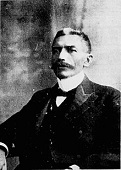
On Jan. 6-9, 1895 the 1895 Wilcox Rebellion (Counter-Rev.) in Hawaii, led by Maui-born Robert William Kalanihiapo Wilcox (1855-1903) AKA the Iron Duke of Hawaii sees royalists lose three battles in Oahu, causing queen (since Jan. 29, 1891) Liliuokalani to reluctantly abdicate on Jan. 24 and swear allegiance to the Repub. of Hawaii, after which she is arrested for complicity, then tried and found guilty of treason and sentenced to five years in prison, resulting in house arrest in her palace for two years, during which time the pissed-off Polynesian queen composes the song Aloha Oe ("Farewell to Thee") (alt. trans.: oy ve?), which helps win her release?; "Farewell to you, farewell to you/ The charming one who dwells in the shaded bowers/ One fond embrace,/ 'Ere I depart/ Until we meet again"; the Kingdom of Hawaii is kaput, going into exile and plotting a comeback in vain.
On Nov. 13, 1895 the first shipment of canned pineapple from Hawaii is sent.
On Nov. 26, 1895 the Hawaiian Sugar Planters' Assoc. (HSPA) is founded, going on to open offices in Manila and Vigan, Ilocos Sur to recruit Filipino workers, offering them free passage to Hawaii and set up a lobbying effort in Washington, D.C. to lobby for labor and immigration polices and legislation beneficial to the Hawaiian sugar industry; the 1934 U.S. Tydings-McDuffie Act limits Filipino immigration to 50 workers/year.
On June 16, 1897 the U.S. govt. signs an annexation treaty with Hawaii sans a vote of the Hawaiian people despite the Kue Petitions (Monster Petition) (21K signatures) (half of the native adult pop. of Hawaii) being submitted by Queen Lili'uokalani.
This magic moment, so different and so new, was like any other, until what happened? On July 4, 1898 the Newlands Resolution, passed by the U.S. Senate 42-21 and the U.S. House 209-9, and signed by Pres. McKinley on July 7 officially annexes the Territory of Hawaii (until Aug. 21, 1959), with Sanford B. Dole appointed provisional gov.; on Aug. 12 Pres. McKinley proclaims the legal theft, er, annexation, and a formal ceremony is held on the steps of 'Iolani Palace in Honolulu, which is boycotted by Hawaiians; the cool Hawaiian flag (with 8 stripes for the 8 islands, plus a field) is taken down, cut up and distributed as souvenirs, pissing-off the Hawaiians more; on June 2 the first U.S. troops en route to the Philippines for the Spanish-Am. War arrive in Honolulu, beginning a continuing U.S. military presence in Hawaii (until ?).
In 1898 work begins on the U.S. Navy base at Pearl Harbor (Hawaiian "Wai Momi" = Pearl Waters) in Oahu, Hawaii; in 1909 a drydock is begun over caves believed by Hawaiians to be home to a shark goddess, and when it collapses during construction and a large shark skeleton is found in the foundation, a kahuna priest is called in to ritually cleanse the area, after which the drydock is officially opened by U.S. Navy secy. Josephus Daniels in Aug. 1918.
In Dec. 1899 bubonic plague is announced in Honolulu, Hawaii, carried on a shipment of rice carrying rats from the Nippon Maru that arrived in the summer carrying an infected corpse, infecting 11, causing the Board of Health to put Chinatown under quarantine and begin burning infected bldgs., setting 41 fires; too bad, on Jan. 20, 1900 the Great Honolulu Chinatown Fire sees winds spread the fire out of control, burning for 17 days and destroying 38 acres, which doesn't stop the building-burning campaign, which sets another 31 fires, leaving 7K homeless, who are housed in quarantine camps until Apr. 30; a total of 40 die of the plague; despite Chinatown being rebuilt in 1902, many Chinese move to the suburbs, causing Chinatown to fall into disrepair, ending up a red-light district by 1946; meanwhile Korean laborers arrive in 1903, followed by Filipino laborers in 1906.


On Apr. 30, 1900 Hawaii joins Alaska, Okla., N.M., and Ariz. as a U.S. territory, with Sanford Ballard Dole (1844-1926) as gov. #1 on June 14 (until Nov. 23, 1903); on June 14 Congress passes a law granting citizenship to all people who had been citizens of the Repub. of Hawaii at the time of annexation; unlike Puerto Rico, Hawaii pays tariff dues and income tax to the federal govt.; large-scale immigration of Asian (Japanese) labor begins, and by 1910 Hawaii's pop. is 192K, of whom only 26K are natives, 12.5K part-natives, 21.5K Chinese, and 80K Japanese; meanwhile his cousin James Drummond Dole (1877-1958) graduates from Harvard U. and moves into Honolulu, using his $16,240 savings to purchase land in the C plains of Oahu, building a cannery in Wahiawa and founding the Hawaiian Pineapple Co. in 1901 to distribute canned pineapple after stealing Cayenne pineapples from French Guiana, growing it into an empire with a breakthrough peeling-coring machine invented by Henry G. Ginaca (1876-1918) and a new 200K-acre plantation on Lanai in 1922, becoming known as "the Pineapple King", eventually escorting young Shirley Temple through his Honolulu corporate offices for a photo op.; in 1991 it is renamed the Dole Food Co.; too bad, the Big Five of Hawaii, incl. Castle & Cooke, Alexander & Baldwin, C. Brewer & Co., Amfac, and Theo H. Davies & Co. create an oligarchy, with Hawaii atty. gen. Edmund Pearson Dole uttering the 1903 soundbyte: "There is a govenment in this Territory which is centralized to an extent unknown in the United States, and probably almost as centralized as it was in France under Louis XIV."
On Apr. 30, 1900 the Dem. Party of Hawaii is formed by supporters of Queen Liliuokalani, holding its first convention on May 16 attended by 500; too bad, the white-run Repub. Party controls Hawaii until the end of WWII.
On June 13, 1900 the postal system of Hawaii merges with the U.S. Postal Service.

In Nov. 1900 due to a pathetic 6.2% voter turnout (9,589 votes cast), elections in Hawaii are an overwhelming V for the pro-monarchy nativist Hawaiian Independent Party (founded on Nov. 11 by Robert Wilcos) (later the Independent Home Rule Party) over the white-run Repub. Party (formerly the Reform Party); Maui-born Robert William Kalanihiapo Wilcox (1855-1903) AKA the Iron Duke of Hawaii is elected the first Hawaiian territorial delegate to Congress.
On Mar. 11, 1901 the Moana (Hawaiian "open sea, ocean") Hotel in Waikiki, Honolulu, Hawaii opens, becoming the first hotel in Waikiki, launching the tourist industry with the help of the Matson Navigation Co.
On Mar. 2, 1901 the first telegraph co. in Hawaii opens.
On July 4, 1903 the Commercial Pacific Cable Co. opens, connecting San Francisco, Calif., Hawaii, Guam, and Philippines, with Pres. Teddy Roosevelt sending the message "A happy Independence Day to the US, its territories and properties."
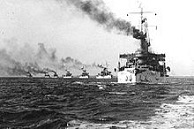
On Dec. 16, 1907 Pres. Roosevelt dispatches the Great White Fleet, 16 white-painted battleships (flagship Connecticut, Georgia, Illinois, Kansas, Kearsarge, Kentucky, Louisiana, Minnesota, Missouri, Nebraska, New Jersey, Ohio, Rhode Island, Vermont, Virginia, Wisconsin) on a global voyage from Hampton Roads, Va., in order to impress the Japanese and show that the U.S. intends to range freely in the Pacific; it sails through the Strait of Magellan to Japan, Australia, and New Zealand before returning through the Suez Canal, stopping in many ports and arriving back on Feb. 22, 1909 after sailing 46K mi.; in 1908 the Great White Fleet passes in review off the coast of the leper colony in Molokai, Hawaii as a signal of respect to Brother Joseph. - don't ask what the oil bill was?

In 1907 San Francisco, Calif.-born "The Call of the Wild" celeb novelist John Griffith "Jack" London (nee John Griffith Chaney) (1876-1916) visits Hawaii with his wife Charmian on their yacht Snark, incl. Pearl Harbor, Ewa Plantation, Haleakala, Kailua-Kona, Hilo, and Molokai, introducing Americans to surfing, after which his checks bounce; they return in 1915 for 10 mo., giving a speech at a banquet with Queen Liliuokalani, Prince Jonah Kuhio Kalanianaole, and Duke Kahanamoku, advocating restriction of immigration.
In 1907 the U. of Hawaii is founded in Manoa, Honolulu, Hawaii, becoming the flagship of the U. of Hawaii system; alumni incl. both parents of U.S. pres. Barack Obama.
On Feb. 3, 1909 U.S. Pres. Theodore Roosevelt issues Executive Order 1019 creating the Hawaiian Islands Bird Reservation to protect seabird nesting sites; in 1940 Pres. Franklin D. Roosevelt converts it to the Hawaiian Islands Nat. Wildlife Refuge, after which it is increased via the Midway Atoll Nat. Wildlife Refuge (1988), Kure Atoll State Wildlife Sanctuary (1993), and the NWHI Coral Reef Ecosystem Reserve (2000).
In the 1910s large-scale pineapple growing is established in Hawaii.
In 1910 the Mediterranean fruit fly is discovered in Hawaii, which is full of yummy bananas.
In 1911-12 the Hawaiian Volcano Observatory is established on Uwekahuna Bluff on the rim of Kilauea Caldera on the Big Island of Hawaii to monitor four active Hawaiian volcanoes incl. Kilauea, Mauna Loa, Hualalai, and Haleakala.
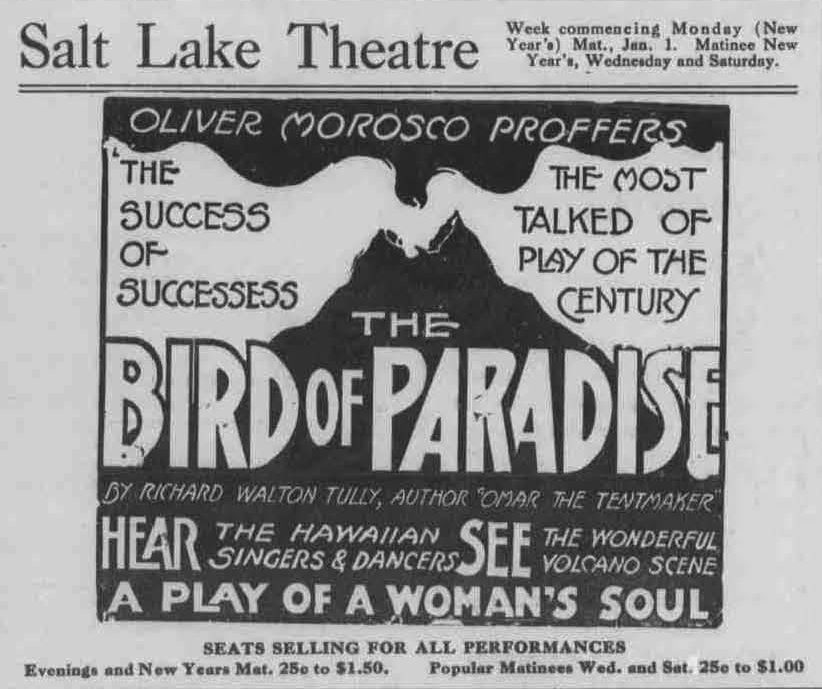
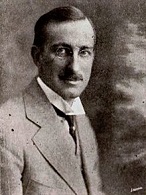
On Jan. 8, 1912 Nevada City, Nev.-born playwright Richard Walton Tully (1877-1945) debuts his play Bird of Paradise: A Play of a Woman's Soul at Daly's Theater in New York (112 perf.); awaiian princess Luana falls for Dr. Paul Wilson, who saves the people from leprosy before sacrificing himself to the volcano god; Hawaiian male singers Kolomoku, Waiwaiole, Kaiawe, Kawala, and Aoka sing "Mauna Kea", "Waialae", and "Ku'u Home" (Old Plantation) while playing the guitar, ukulele, steel guitar, and ipu, introducing Hawaiian music to Americans, along with the Hawaiian words pau (finished), wiki wiki (hurry up), pau (pa'u) hana (work), aloha (greetings), nui (love to you), and pilikea (trouble); after it is featured in the 1915 Panama-Pacific Internat. Exposition in San Francisco, Calif. in 1915, which introduces the Hawaiian steel guitar to country musicians, Hawaiian music outsells all other styles in the U.S. in 1916.





On May 5-July 22, 1912 the V Summer (5th) Olympic Games in Stockholm, Sweden are dominated by All-American James Francis "Jim" Thorpe (1888-1953), a Sac and Fox Indian with some Irish descent who wins the pentathlon (4 firsts) and the decathlon (8412.96 out of a possible 10K pts.), then responds to the compliment "You, sir, are the greatest athlete in the world" by Swedish king Gustavus V with the immortal soundbyte "Thanks, king!"; West Point grad. George Smith Patton Jr. (1885-1945) places 5th in the pentathlon; swimming champ ("Father of American Surfing") Duke Kahanamoku (1890-1968) of Hawaii appears in a sleek swimsuit with bikini-like underdrawers, shocking Anglo-Saxons plagued by sex guilt, and revolutionizing sprint swimming by replacing the scissors kick with the flutter kick, winning a gold medal in the 100m freestyle and a silver medal in the men's 4x200m freestyle relay; on July 15 Portuguese marathon runner (first ever) Francisco Lazaro (Lázaro) (b. 1891) becomes the first Olympic athlete to die in competition (next 1960) after he waxes his body to prevent sunburn, interfering with perspiration; Charles Lyndhurst Winslow (1888-1963) of South Africa wins gold in men's singles and doubles tennis; Giovanni Pellegrini wins the first gold medal in painting; until 1948 medals are awarded to sculptors, architects, writers, and musicins. In 1912 Baron Pierre de Coubertin designs the Olympic Symbol of five interlocking rings colored blue-yellow-black-green-red on a white background, which covers all the colors in the flags of participating nations so far; it debuts in the 1920 games.




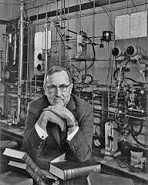
On Aug. 4, 1914 - Nov. 11, 1918 the horrific World War I causes 15M deaths and 39M military casualties. and destroys the Old Order of white formerly Christian Europe. On Feb. 26-28, 1915 the Germans first use a Flamethrower (Flame Projector) in the village of Douaumont, France near Verdun, becoming the first of 653 flamethrower attacks in the war. On Apr. 1, 1915 French aviator Roland Garros (1888-1918) becomes the first pilot to shoot down an aircraft using a deflector gear, which allows shooting through the propeller; after more Vs against German aircraft on Apr. 15 and Apr. 18, he is shot down and the Germans capture his plane, after which Dutch designer Anthony (Anton Herman Gerard) Fokker (1890-1939) clones then improves the deflector gear into the synchronization (interrupter) gear, mounting them on the new Fokker E.I. in Aug., beginning the Fokker Scourge (Scare) as they shoot down nearly every enemy aircraft they encounter and generate the first German aces, incl. Max Immelmann (1890-1916); next year the French counter with the Nieuport 11 Bebe (Bébé), in which the gun is mounted on the top wing clear of the prop, and the British with the Royal Aircraft Factory F.E.2b and Airco DH.2 (Feb. 1916), which mount the engine backwards with the prop in back, causing them to be called "pushers", ending the Fokker Scourge by spring 1917. In 1915 arsenic-based vomiting-sneeze gas Adamsite (DM) (diphenylaminechlorarsine) is synthesized by German chemist Heinrich Otto Wieland (1877-1957); in 1918 Am chemist Roger Adams (1889-1971) duplicates it, and both sides stockpile it, but it is allegedly never used on the battlefield. On Mar. 22, 1916 the British have their first success with their new Depth Charge off the SW coast of Ireland, destroying a German U-boat. Are you used to Hell yet, try this? On Sept. 15, 1916 Winston Churchill's pet project the Tank (Russian Water Closet) (Char-Schneider) is first used by the Brits in the Somme.



On Feb. 20-Dec. 4, 1915 the Panama-Pacific Internat. Exposition is held in San Francisco, Calif.; Rochester, N.Y.-born "American Venus" Audrey Marie Munson (1891-1996) is chosen by Alexander Stirling Calder as the exposition's model; the Hawaiian Pavilion features George E.K. Awai and his Royal Hawaiian Quartet along with Honolulu-born ukelele maker Jonah Kumalae (1874-1940), featuring the ukelele, lap steel guitar, and slack-key guitar, sparking a craze that lasts through the 1920s and helps accelerate Hawaiian statehood, with Kumalae's ukeleles given to passengers on Hawaii-bound cruise ships in the 1920s and distributed at the Royal Hawaiian and other hotels; Tiny Tim later owns a Kumalae ukelele, which is auctioned by his daughter for $2900 in 2004; the Internat. New Thought Alliance (INTA) is held in conjunction with the fair, impressing the organizers so much that they present leader Annie Rix Militz (1856-1924) with a special commemorative bronze medal on a special New Thought Day.
On Mar. 25, 1915 U.S. sub F-4 explodes and sinks off Honolulu, Hawaii, killing 21, becoming the U.S. Navy's first underwater disaster.
On Aug. 1, 1916 Hawai'i (Hawaii) Volcanoes Nat. Park in Hawaii is established, covering Kilauea and Mauna Loa; in 1980 it is designated as an Internat. Biosphere Reserve, followed in 1987 by a World Heritage Site.
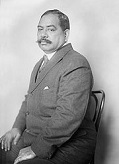
In 1919 the first Hawaiian Statehood Bill is introduced to the U.S. 65th Congress by Hawaiian delegate (1903-22) Prince Jonah Kuhio Kalaniana'ole (1871-1922).








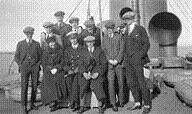
On Aug. 14-Sept. 12, 1920 after an 8-year hiatus the VII (7th) Summer Olympic Games are held in Antwerp, Belgium (to honor WWI suffering), with 2,626 athletes from 29 nations participating in 156 events in 22 sports; Germany, Austria, Hungary, Turkey, and Bulgaria are banned; the Olympic Oath is first uttered, the Olympic Flag is first flown, and doves are first released to symbolize peace; the U.S. team revolts against its barracks-style living quarters and threatens to boycott the games; the U.S. wins the most events, with 41 golds, 27 silvers, and 27 bronzes; figure skating and ice hockey debut; Finnish runner Paavo Nurmi (1897-1973) debuts, winning the first of six gold medals (1920, 1924, 1928), and breaking U.S. dominance in track and field with nine medals; Ethelda M. Bleibtrey (1902-78), who was arrested in 1919 for nude bathing for swimming without stockings wins three golds (100m, 300m, 400m relay) in swimming, becoming the first U.S. woman to win Olympic gold, and one of the first women to wear a flapper "bob"; Duke Kahanamoku (1890-1968) of Hawaii wins a gold medal in the 100m freestyle, beating fellow Hawaiian Pua Kele Kealoha (1902-89), and a gold medal in the 4x200 freestyle relay along with Kealoha, who allegedly could swim from Molokai to Oahu but not the other direction; Albert George Hill (1889-1969) of Britain wins golds in the 800m and 1500m, and silver in the 3000m; "the Calif. Cannonball" Charles William "Charlie" Paddock (1900-43) of the U.S. wins the 100m in 8.3 sec.; his teammate "the New York Thunderbolt" Jackson Volney Scholz (1897-1986) makes a mistake and looks at him and comes in 2nd at 8.4; 72-y.-o. Oscar Gomer Swahn (1847-1927) of Sweden becomes the oldest Olympic gold medal winner (team double-shot running deer event) (until ?); the last Olympics to host the tug-of-war event (Britain gold, Netherlands silver, Belgium bronze). figure skating makes its debut; Canada (WInnipeg Falcons) win the gold medal in the debut of Olympic ice hockey, followed by the U.S. and Czech.














Chariots of Fire? On May 4-July 27, 1924 the VIII (8th) (Eighth) Summer Olympic Games are held in Paris, with 3,092 participants from 44 nations in 24 sports and 137 events; the U.S. wins 12 gold medals; "Flying Finn" Paavo Nurmi (1897-1973) wins four gold medals; British runners Harold Maurice Arahams (1899-1978) (Jewish) (known for the Abrahams Dip) and "the Flying Scotsman" Eric Henry Liddell (1902-45) (rhymes with fiddle) (Christian) win gold medals in the 100m (Sun.) and 400m races, respectively, wearing newfangled spiked running shoes made by Reebok Internat. Ltd. of England, originally J.W. Foster & Sons, which introduced the first spiked running shoes in 1895; Abrahams stirs displeasure of English Christian elitists by hiring half-Italian half-Arab prof. trainer Scipio Africanus "Sam" Musabini (1867-1927); starting blocks aren't used for another 10 years; after making worldwide news for refusing to run on Sun. (the Sabbath), devout Scottish Presbyterian Liddell becomes the first Scot to win a gold medal; before the 400m race an Am. masseur slips a piece of paper into his hand with a quotation from 1 Sam. 2:30 ("Those who honor me I will honor"), which he runs with; Abrahams becomes the first Euro to win the 100m, beating U.S. favorites "the Calif. Cannonball" Charles William "Charlie" Paddock (1900-43) and "the New York Thunderbolt" Jackson Volney Scholz (1897-1986); Yale U. medical student Benjamin McLane Spock (1903-98) wins a gold medal as part of the men's 8-man rowing team; Romanian-born Am. swimmer Peter John "Johnny" Weismuller (1904-84) wins a record two solo golds in swimming, incl. the 100m freestyle, with Hawaii's Duke Kahanamoku (1890-1968) winning silver and his brother Samuel Alapai Kahanamoku (1902-66) winning bronze; "Little Miss Poker Face" Helen Wills Moody (Helen Newington Wills Roark) (1905-98) wins two golds in tennis (singles and doubles), going on to win 31 Grand Slam titles incl. 19 singles titles, and a record eight Wimbledon singles titles, which isn't surprassed until Martina Navratilova in 1990; William Butler Yeats' brother Jack B. Yeats wins a silver medal in painting for his work "The Liffey Swim"; the last year that tennis is an Olympic sport until 1988; 60K watch Uruguay defeat Switzerland 3-0 for the gold medal in soccer, becoming the sport's first worldwide exposure.
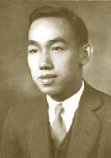
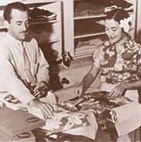
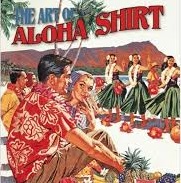
In 1924 the Du Pont Co. introduces Rayon, a synthetic fiber manufactured from the cellulose fiber of natural wood pulp; in 1931 Ellery J. Chun (1909-2000) begins selling the first colored Hawaiian Aloha shirts, designed by his sister Ethel Chun Lum from his King-Smith Clothiers shop in Waikiki, Honolulu, trademarking the name in 1936; in 1936 George Brangier founds Kahala Spotswear in Waikiki to sell Aloha shirts, making fans of John Wayne et al., after which they proliferate like tropical vines, making fans of Bing Crosby, Frank Sinatra, Montgomery Clift and other Hollywood stars.
In 1925 the song Ukelele Lady by Gus Kahn and Richard A. Whiting is recorded by the Paul Whiteman Orchestra, Vaughn De Leath, and Lee Morse, becoming a hit.
On June 29, 1926 Pres. Calvin Coolidge issues Executive Order 4467, establishing the Johnston Island Reservation 860 mi. SW of the Big Island of Hawaii as a federal bird refuge under control of the U.S. Dept. of Agriculture (USDA), adding it to the U.S. Nat. Wildlife Refuge in 1926 and renaming it Johnston Island Nat. Wildlife Refuge in 1940; on Dec. 29, 1934 Pres. FDR issues Executive Order 6935, placing the islands under the control of the Secy. of the Navy, w hile retaining its function as a bird refuge under control of the Dept. of the Interior; on Feb. 14, 1941 Pres. FDR issues Executive Order 8682, establishing the Johnston Island Naval Defensive Sea Area and Johnston Island Naval Airspace Reservation; the military mission on the island ends in 2004.
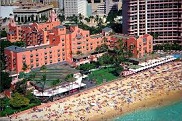
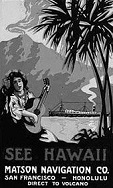
On Feb. 1, 1927 the pink Spanish-Moorish Royal Hawaiian Hotel in Waikiki, Honolulu, Hawaii opens, opening onto the wide sandy beach of Waikiki, becoming a big hit, with 20K visitors in 1928, becoming known as "the Pink Palace of the Pacific"; meanwhile the "white ship" SS Malolo (Hawaiian "flying fish") luxury cruise ship begins service for the Matson Navigation Co. between San Francisco, Los Angeles, and Honolulu, becoming the fastest ship in the Pacific (22 knots), helping develop Hawaiian tourism along with the Royal Hawaiian Hotel and cool alluring ads; its advanced watertight compartments survive a Titanic-like collision with the SS Jacob Christensen on May 25; in 1930-2 luxury liners Mariposa (1931), Monterey (1932), and Lurline (1932) are added to the White Fleet, going out of service in the 1970s after air travel takes over.
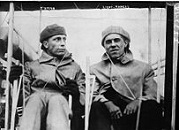
In Mar. 1927 John Rodgers Airport in Honolulu, Oahu, Hawaii opens, named after WWI naval officer John Rodgers (1881-1926) (who led an attempted non-stop flight from Calif. to Hawaii in 1925), becoming the first full airport in Hawaii; after the 1941 Pearl Harbor attack, the name is changed to Naval Air Station Honolulu; in 1947 it is renamed Honolulu Airport; in 1951 it becomes Honolulu Internat. Airport, becoming the 3rd busiest aiport in the U.S. by 1950, with the longest runway in the world (13,097 ft. or 3,992m) in 1953; in summer 1959 Qantas begins the first jet service to Honolulu on its flights from Australia to Calif.; on May 30, 2017 it becomes Daniel K. Inouye Internat. Airport.
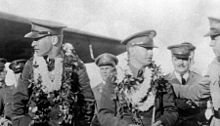
On June 27, 1927 (7:00 a.m.) USAAF Lts. Lester James Maitland (1899-1990) and Alfred Francis Hegenberger (1895-1983) takeoff in the Bird of Paradise from Oakland, Calif., arriving 25 hours 50 min. later on June 29 at Wheeler Field in Oahu, Hawaii, setting a long distance record of 2,407 mi. and becoming the first to make the transpacific crossing to Hawaii, getting Maitland invited to meet Pres. Coolidge in the White House next year along with Charles Lindbergh.
On Jan. 30, 1929 Inter-Island Airways is founded in Honolulu, Hawaii by Inter-Island Steam Navigation Co., beginning operations on Oct. 6 with sightseeing flights over Oahu, followed on Nov. 11 by a flight to Hilo with stops on Molokai and Maui, changing its name on Oct. 1, 1941 to Hawaiian Airlines, becoming the largest airline in Hawaii, and the 8th largest commercial airline in the U.S., enjoying a record free of fatal accidents or hull losses until ?; in 1941 it flies three new 24-passenger DC-3s in formation from Oakland, Calif. to Honolulu in 13 hours 54 min., setting an over-water flight record for the DC-3; in 1942 it inaugurates the first scheduled air cargo service with certificate #1; in 1943 it carries 108K passengers.
On May 1, 1929 the first Lei Day celebration is held in Hawaii, with each island using a different type of lei.
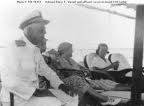
On Feb. 7, 1930 (Sun.) (dawn) a fake attack on Pearl Harbor on Oahu, Hawaii called Fleet Problem 13 is staged by U.S. rear Adm. Harry Ervin Yarnell (1875-1959), using storm as a cover at dawn and launching 152 planes from the NE (same as the Japanese did on Dec. 7, 1941), using flour sacks as bombs, ending in a complete V for the attackers; despite this, the umpires report that "... it is doubtful if air attacks can be launched against Oahu in the face of strong defensive aviation without subjecting the attacking carriers to the danger of material damage and consequent great losses in the attack air force."

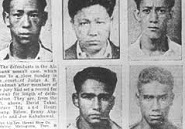

Who needs the 1941 Pearl Harbor Attack as an excuse to declare war on Japan? On Sept. 12, 1931 the Massie (Paradise Rape) Case results after lily white upper-class Hawaiian socialite Thalia Massie (-1963) (wife of white U.S. Navy Lt. Thomas Massie (-1987), stationed at Pearl Harbor) leaves a nightclub in Waikiki, Honolulu, Hawaii and later claims to be have been raped in Ala Moana Park by several dark-skinned savage, er, locals, identifying Japanese man Horace Ida, who had just been involved in an automobile accident with his boxer friend Joseph Kahahawai, after which a trial results in a deadlocked jury, after which Thalia's mother Grace Hubbard Fortescue (nee Bell), niece of Alexander Graham Bell and granddaughter of Nat. Geographic Society founder Gardiner Greene Hubbard arranges for Horace Ida to be kidnapped and viciously beaten, and talks Thomas Massie and two enlisted Navy men into kidnapping and killing Kahahawai, only to be arrested in their rented car with the shades pulled down while trying to dump the body off Koko Head, causing the white supremacist press to fan the flames to cause another hung jury, with the Honolulu Advertiser running the headline "Gang Assaults Young Wife", and another claiming that "the roads go through jungles and in those remote places bands of degenerate natives lie in wait for white women driving by", raising the temperature almost to race riots; after famed defense atty. Clarence Darrow comes out of retirement to defend the whites for big bucks ($40K), the jury convicts them of manslaughter, with 10-year sentences that are commuted by lily white territorial gov. Lawrence M. Judd, after which they leave Hawaii aboard a ship; Thalia and Massie divorce in 1934, and she commits suicide in 1963.
On Dec. 13, 1933 Billy Cogswell, Tommy Harrison, and Johnny Noble record the hit hapa haole song My Little Grass Shack in Kealakekua, Hawaii, composed for the Kona Independence Day celebrations in Kealakekua Bay on July 4, becoming a std. Hawaiian song; "I want to be with all the kanes and wahines that I used to know"; "Where the Humuhumunukunukuapuaa go swimming by"; "Komo mai no kaua i ka hale welakahao" (Come into our house while the iron's hot").
On Nov. 30, 1935 an earthquake on the Big Island of Hawaii leads to an eruption of Mauna Loa, threatening Hilo with lava flow moving at 1 mi./day until Hawaiian Volcano Observatory dir. Thomas Augustus Jagger proposes to transport TNT to strategic points via mule teams, which is changed to aerial bombing for speed, causing 10 bombers from the 23rd Bomb Squadron of the U.S. Army Air Corps to drop 20 bombs containing 600 lbs. of TNT on Dec. 16, stalling the flow, which is later attributed to natural forces instead.

On Mar. 23, 1937 Frank Tuttle's Waikiki Wedding (Paramount Pictures) debuts, starring Bing Crosby as PR man Tony Marvin, who is tasked with selling Hawaii despite comments mae by local beauty queen Georgia Smith (Shirley Ross); it features the hit song Sweet Leilani (Hawaiian "heavenly garland of flowers"), composed by Harry Owens, which wins the best song Oscar for 1937.
In 1937 Winston Jones and J.H. Beaumong of the U. of Hawaii successfully graft macadamias, permitting mass production, causing a large macadamia planation to be established in Hawaii in 1946, and Castle & Cooke (founded 1851) to begin offering Royal Hawaaian brand macadamia nuts in 1953.
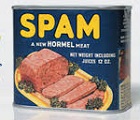
In 1937 Hormel Foods Corp. introduces Spam (SPAM) canned spiced ham, "the Miracle Meat" with a big publicity campaign, becoming especially popular in Hawaii; the 6 billionth can is produced in 2002; meanwhile on Dec. 15, 1970 Monty Python's Flying Circus debuts their Spam Sketch, on BBC-TV, portraying the product as a horrible-tasting inescapable food additive, causing the name to be adopted for unsolicited email.
On Feb. 4, 1938 protests against the Inter-Island Steam Navigation Co. by the Internat. Longshoremen's Union et al. begin; on Aug. 1, 1938 (Bloody Mon.) (10:00 a.m.) the Hilo Massacre sees 70+ police officers break up a strike by 200+ unarmed protesters, injuring 50 with riot guns.
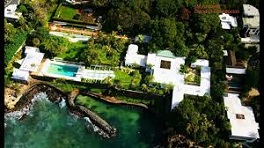
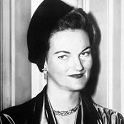
In 1938 after Am. heiress Doris Duke (1912-93) goes on a honeymoon in the Islamic World in 1935 and gets turned-on, ordering it built in 1936, the $1.2M 14K sq. ft. Shangri La Islamic-style mansion in Kahala near Diamond Head outside Honolulu, Hawaii (begun 1936) is completed; she goes on to become the first non-Hawaiian woman to take up competitive surfing under tutor-lover Duke Kahanamoku; in 2002 after filling it with Islamic art she opens it to the public.



On Sept. 1, 1939 - Sept. 2, 1945 the horrific $3.5T World War II resulted in 24M military and 49M civilian deaths, and featured the low point of the Jewish Holocaust (Shoah) by the German Nazis, I guess it was the Jews' fault for not ransoming themselves to go to Israel before they could round them up for the camps. The whole experience turned Jews from lovers into fighters, ramping up the Zionist movement with full world sympathy and support by new world superpower U.S., which had its own guilt trip because on Nov. 24, 1942 Budapest-born Am. Zionist leader Rabbi Stephen Samuel Wise (1874-1949) announced in a press conference in Washington, D.C. that he was authorized by the U.S. State Dept. to confirm that the Nazis had murdered 2M Jews as part of a plan to exterminate all Jews in Europe; too bad, the nat. newspapers didn't consider it front page news, and the U.S. govt. did nada. After the war ended and Americans toured the concentration camps in horror, Polish-born Jewish scholar Raphael Lemkin (1900-59), who single-handedly led an unsuccessful campaign to get the League of Nations to give internat. protections against genocide starting in 1933 finally got what he wanted after his own people got it, namely the Dec. 9, 1948 U.N. Convention on the Prevention and Punishment of the Crime of Genocide (Gen. Assembly Resolution 260), which didn't come in force until Jan. 12, 1951, and which the U.S. still didn't ratify until 1988.
In May 1940 the base for the U.S. Pacific Fleet is moved from San Diego, Calif. to Pearl Harbor in Hawaii.






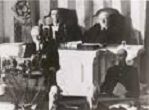


On Jan. 24, 1941 U.S. Navy secy. Frank Knox writes to the British War Dept. that a war with Japan might lead to a surprise attack at Pearl Harbor, with "inherent possibilities of a major disaster". On Jan. 25 as Ky.-born Adm. Husband Edward Kimmel (1882-1968) replaces Adm. Richardson as Pacific Fleet cmdr., they jointly write a letter to Naval CIC Adm. Stark discussing the possibility of a Japanese surprise attack on Pearl Harbor, causing new pursuit planes and B-17 bombers to be sent to Hawaii and the Philippines. meets in Washington, D.C. to determine if, when, and at what cost an atomic bomb can be produced by the U.S., with answers due in 6 mo. On Dec. 6 Christian Science Monitor journalist Joseph Close Harsch (1905-98) interviews U.S. Adm. Hubbard E. Kimmel, who utters the soundbyte: "Since you have been traveling, you probably don't know that as of six days ago the German high command announced that the German armies in Russia had gone into winter quarters. That means that Moscow is not going to fall to the Germans this year. That means that the Russians will still be in the war in the spring. That means that the Japanese cannot attack us in the Pacific without running the risk of a two-front war. The Japanese are too intelligent to run the risk of a two-front war unnecessarily. They will want to wait until they are sure that the Russians have been defeated"; although he might never have never been warned about the Pearl Harbor attack, and didn't know that the Japanese consulate in Honolulu was keeping close tabs on his fleet, his belief that Japan isn't going to war at all sets him up for disaster? On Dec. 8 (12:30 p.m.) the U.S. declares war on Japan as Pres. Roosevelt addresses a joint session of Congress in the House chamber in his 6-min. Date Which Will Live in Infamy Speech, with the soundbyte: "Yesterday, December 7, 1941, a date which will live in infamy, the United States of America was suddenly and deliberately attacked by naval and air forces of the empire of Japan", claiming that "one hour after Japanese air squadrons had commenced bombing in Oahu, the Japanese ambassador to the United States and his colleague delivered to the secretary of state a formal reply to a recent American message... It contained no threat or hint of armed attack", adding the soundbyte: "No matter how long it may take us to overcome the premeditated invasion, the American people in their righteous might will win through to absolute victory; Congress gives Roosevelt the greatest ovation of his presidency, and the declaration of war is on his desk in only 2.5 hours; he signs it at 4:10 p.m.; only Mont. Repub. Rep. Jeannette Rankin (1880-1973) votes against war, just like in 1917; Roosevelt freezes Japanese assets in the U.S. and suspends relations; Japan-savvy Joseph Clark Grew (1880-1965) becomes acting U.S. secy. of state for the rest of the war (until Aug.), going on to become the main member of the Committee of Three with secy. of state Henry L. Stimson and war secy. James Forrestal, attempting to find a way to make Japan surrender without having to use the A-bomb, proposing that they be allowed to keep their emperor, which is er, torpedoed by nuke-happy Truman; Stimson talks him out of targeting Kyoto because of its religious significance; Francis Biddle (1886-1968) is appointed U.S. atty. gen. (until 1945); FDR supporter Tex. Rep. Lyndon Baines Johnson (b. 1908) becomes the first member of Congress to enlist in the Armed Forces after the attack, serving in the Navy in the Pacific and winning a Silver Star; the USS Arizona is left partially submerged with the remains of 1,103 U.S. sailors as a memorial after the war, with the battleship USS Missouri anchored nearby; writer James A. Michener waves his exemption as a Quaker and joins the Navy; many actors enlist: actor Jason Robards Jr. is a Navy radioman on duty aboard the USS Northamption 100 mi. from Pearl Harbor during the attack; actor Ronald Reagan joins the U.S. Army Air Corps, becoming a capt. but now allowed to fly because of hearing problems, appearing in training films; actor Carl Reiner joins the army, becoming a teletype operator, and touring the South Pacific as a comedian; actor Don Rickles joins the U.S. Navy, serving on a destroyer; actor Mickey Rooney becomes a PFC in the U.S. Army, serving with a unit that entertains troops; journalist Andy Rooney becomes a sgt. in the U.S. Army, joining the staff of Stars and Stripes in London, becoming one of the first journalists allowed aboard B-17 bombers attacking Germany in 1943; Western writer Louis L'Amour becomes a 2nd lt. in the Army; writer William Styron becomes a lt. in the Marines; actor Tyrone Power joins the Marines, becoming a pilot in the South Pacific; writer Norman Mailer joins Army intel; writer J.D. Salinger becomes a counterintel agent; writer Ernest Hemingway becomes a soldier and receives a Bronze Star; actor Jason Robards earns a Navy iron cross at Pearl Harbor; dir. John Ford becomes a Navy cmdr. and films the takeoff of the Doolittle planes, the Battle of Midway, and D-Day; cowboy star George O'Brien joins the Navy, and after the war stays in the Navy Reserve, becomes a sailing nut and losing his love of acting. On Dec. 17 U.S. Army Air Forces Lt. Gen. Delos Carleton Emmons (1889-1965) becomes cmdr. of the Hawaiian Dept. (until June 1943), overseeing the replacement of U.S. banknotes with special ones overstamped with "Hawaii" in case of Japanese occupation, building up U.S. aircraft in anticipation of the Battle of Midway, and intervening to stop loyal local Japanese U.S. citizens from being relocated.
On May 27, 1942 after being docked in Norfolk, Va. during the Dec. 7, 1941 Pearl Harbor Attack, and carrying U.S. Marines to Am. Samoa from San Diego on Jan.6, 1942, then participating in the Battle of the Coral Sea on May 4-8, 1942, U.S. aircraft carrier USS Yorktown (launched Apr. 4, 1936) enters dry dock at Pearl Harbor for accelerated repairs, steaming out on May 30 en route to the Battle of Midway on June 4-7, 1942, where she is sunk.
On Feb. 1, 1943 the "go for broke" U.S. Infantry Battalion/442nd Regimental Combat Team is authorized, made up almost entirely of pidgin-speaking Hawaiian Japanese originally drafted before Pearl Harbor, then placed under arrest, and finally sent to Italy where it is thought to be more "safe" for them; by the end of the month mainland Japanese are permitted to join as an alternative to detention camps; under pressure to prove they are loyal Americans, they become one of the most highly decorated U.S. military units of WWII, with 14K men total earning 9,486 Purple Hearts and 21 Medals of Honor, becoming the most decorated unit for its size and length of service in U.S. history.
On May 21, 1944 (3:00 p.m.) (Sun.) U.S. tank landing ship LST-353 explodes in West Loch in Pearl Harbor, Hawaii, causing six other LSTs to sink and damaging two others, killing 163 and injuring 396.
In 1944 the Hawaiian Music Hall of Fame is established.
On Apr. 1, 1946 the 6.8 1946 Aleutian Islands Earthquake injures 165-173 and causes $26M in damage after causing a tsunami that hits Kauai and Hilo, Hawaii.
On July 26, 1946 Aloha Airlines (originally Trans-Pacific Airlines) begins operations from Honolulu Internat. Airport in Hawaii, growing to a fleet of 22 aircraft flying to 20 destinations; it ceases operations on Mar. 31, 2008.
On Sept. 1, 1946 the Hawaii Dem. Rev. begins, with strikes, protests, and civil disobedience culminating in the Hawaiian territorial elections of 1954, which ends the reign of the Hawaiian Repub. Party and the Big Five Oligopoly of Hawaii.


On Apr. 28, 1947 Norwegian ethnographer Thor Heyerdahl (1914-2002) leaves Lima, Peru in a tiny 6-man pae-pae balsa log raft with a bamboo cabin named Kon-Tiki, traveling 7K km (4.3K mi.) to the Tuomotu Islands in Polynesia in 101 days, and spawning all kinds of theories of history; a documentary movie is released in 1951.
In 1950 Hawaii supplies 72% of the world's pineapples, which slides to 33% by the 1970s as Thailand and the Philippines begin competing; too bad, Hawaiian pineapple growers use heptachlor to kill ants, which ends up in local dairy products consumed by children, and is not banned by the EPA until 1974.
On June 1-23, 1950 Mauna Loa in Hawaii erupts, destroying the village of Ho'okena-mauka but causing no fatalities; next eruption in 1984.
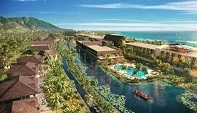
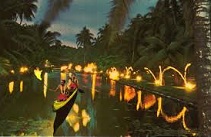
On Jan. 25, 1953 the Coco Palms Hotel (Resort) in Wailua, Kauai, Hawaii opens, starting out with 24 rooms and growing to 416 rooms by the mid-1970s, turning on celebs by having them plant coconut trees marked with their names and dates, incl. Duke Kahanamoku, Bing Crosby, the von Trapp Family Singers, and the Prince and Princess of Japan; the 1961 Elvis Presley film "Blue Hawaii" is partly shot on the grounds, featuring the nightly (7:30 p.m.) Call to Feast torch-lighting ceremony.

On Aug. 5, 1953 Fred Zinnemann's From Here to Eternity (Columbia Pictures) debuts, based on the 1951 James Jones novel about army soldiers at the Schofield Barracks in Honolulu in 1941 before the Pearl Harbor attack, starring Montgomery Clift as Pvt. Robert E. Lee "Prew" Pruitt (who quit the bugle corps after blinding a fellow soldier while boxing), Frank Sinatra (who takes a pay cut from $150K per picture at MGM to $8K at Columbia) as his best friend Pvt. Angelo Maggio, and Burt Lancaster as 1st Sgt. Milton Warden, who makes hot love on the beach at Halona Cove with the captain's wife Karen Holmes (Deborah Kerr); Ernest Borgnine plays SSGt. James R. "Fatso" Judson; Donna Reed stars as Alma "Lorene" Burke; Eli Wallach was originally cast as Maggio, but Sinatra used his gangland connections to get the part, causing Wallach to claim he turned it down on his own to appear in a Tennessee Williams play, after which Sinatra greets him with "Hello, you crazy actor"; Tyrone Power and his wife Linda Christian were offered the leading roles that went to Montgomery Clift and Donna Reed; a surprise Oscar revives Sinatra's flagging career; does $30.5M box office on a $2.5M budget; watch clip.
On July 26, 1955 Pu'uhonua o Honauau Nat. Historical Park (originally City of Refuge Nat. Historical Park until Nov. 10, 1978) is established on the Big Island of Hawaii.
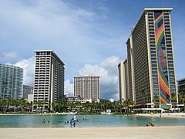
On Sept. 15, 1955 the Hilton Hawaiian Village on Waikiki Beach in Honolulu, Hawaii opens, built on the ruins of the Niumalu (Old Waikiki) Hotel in the former village of Kalia, childhood home of Duke Kahanamku by industrialist Henry J. Kaiser, becoming the largest hotel in the U.S. outside Las Vegas, Nev.; Elvis Presley says there during filming of "Blue Hawaii" (191); in 1968 the Rainbow Tower opens, with a 286'x26' ceramic tile rainbow containing 16K tiles; in 1982 the Tapa Tower opens, followed by the Ali'l Tower in 1987, and the 453-room Kalia (Waikiki) Tower in May 2001, which grows toxic eurotium mold, resulting in a $25M settlement in 2006 after spending $55M to clean it up.
On Sept. 26, 1955 Brigham Young U. - Hawaii in Laie, Honolulu, Hawaii on the N shore of Oahu is founded by the LDS Church; on Oct. 12, 1963 it opens the Polynesian Cultural Center, which becomes a hit with tourists.

In Mar. 1958 Am. chemist Charles David Keeling (1928-2005) begins measuring atmospheric CO2 on Mauna Loa, Hawaii for the Internat. Geophysical Year, obtaining an initial reading of 314 ppm, which grows to 387 ppm in 50 years, becoming known as the Keeling Curve.

In 1958 King's Hawaiian Bakery (originally Robert's Bakery) is founded in Hilo, Hawaii by Robert Taira (1923-2003), who moves it to Honolulu in the eary 1960s, growing to $20M sales/year of its yummy Hawaiian bread (actually Portuguese sweet bread); in 1988 it moves its HQ to Torrance, Calif.

In 1958 after seeing bamboo hoops from Australia at the New York Toy Fair in Mar., Wham-O (named after the sound made by their first product, a slingshot) introduces the 3-ft. gaudy polyethylene Hula Hoop (invented by Arthur K. "Spud" Melin and Richard Knerr) to the U.S. public at $.93 each for a 16% profit, and ups the price to $1.98 after a craze begins and it becomes America's most popular toy, used by adults for calisthenics; by Labor Day they sell 2M units for a net profit of $300K, but knockoffs appear which sell tens of millions more, and the fad suddenly dies off by the summer of 1959.




On Mar. 12, 1959 the U.S. Congress approves Hawaiian statehood; on Mar. 18 Pres. Eisenhower signs the Hawaii Admission Act, and on Aug. 21 after a popular referendum votes 93# in favor of statehood, 132-island "Aloha State", "Youngest State", "Paradise of the Pacific" Hawaii (Hawai'i) (only state with a diacritical mark in its official name) (named after Havaiki, ancient home of the Polynesians) is admitted as the 50th U.S. state, becoming the 5th state to have an official motto that is not in English or Latin (Calif., Minn., Mont., Wash.): "Ua Mau Ke Ea O Ka Aina I Ka Pono" (The life of the land is perpetuated in righteousness); on Aug. 21 the 1959 Hawaiian Constitution goes into effect; on Aug. 21 Rochester, N.Y.-born St Louis, Mo.-raised Repub. Pres. Eisenhower appointee (since 1957) William Francis Quinn (1919-2006) (Roman Catholic) becomes Hawaii gov. #1 (until Dec. 3, 1962), going on to become pres. of the Dole Pineapple Co. in 1965-72. On July 28 in preparation for statehood, Hawaii votes to send the first Chinese-Am., Hiram (Yau) Leong Fong (1906-2004 (Repub.) to the U.S. Senate (until Jan. 3, 1977), and the first Japanese-Am., Daniel Ken "Dan" Inouye (1924-2012) (Medal of Honor winner) (Dem.) to the U.S. House of Reps. (until Jan. 3, 1963), along with comforably white Oren Ethelbirt Long (1889-1965) (Dem.) to the U.S. Senate (until Jan. 3, 1963).
On Aug. 1, 1959 after starting W of Baja Calif., 150 mph Hurricane Dot hits SE Hawaii Island, making landfall on Aug. 8 before dissipating W of the Hawaiian Islands on Aug. 8, killing two and causing $6M damage, becoming the costliest tropical cyclone so far in Hawaiian history until Hurricane Iniki in 1992.

On Oct. 7, 1959 (Wed) the detective series Hawaiian Eye debuts on ABC-TV for 134 episodes (until Apr. 1963), starring Anthony (Frederick Glendinning) Eisley (1925-2003) as P.I. Tracy Steele, and Robert "Bob" Conrad (Conrad Robert Norton Falk) (1935-) as his half-Hawaiian partner Thomas Jefferson "Tom" Lopaka, who run the Hawaiian Eye Detective Agency in Honolulu, which provides security services for the Hawaiian Village Hotel with the help of photographer Chryseis "Cricket Blake"", played by Connie Stevens (Concetta Rosalie Ann Ingoglia (1938-) and ukelele-playing cab driver Kazuo "Kim" Quisado, played by Poncie Ponce (Ponciano Hernandez0 (1933-2013)); later Greg McKenzie, played by "The Incredible Shrinking Man" John Grant Williams (1931-85) joins the agency, and hotel social dir. Philip Barton, played by Troy Donahue (Merle Johnson Jr.) (1936-2001) lends his aid; the Hawaiian Eye Theme is by Jerry Livingston and Mack David; launched to coincide with Hawaiian statehood and the advent of mass tourism brought about by the introduction of commericial passenger jetliner service, along with the backing of Henry J. Kaiser to promote his Kaiser's Hawaiian Village (later the Hilton Hawaiian Village Hotel); the first of the ABC-Warner Bros. exotic location detective series, all filmed on the same backlot in Los Angeles, incl. "77 Sunset Strip", "Bourbon Street Beat", and "Surfside Six".

In 1959 Doylestown, Penn.-born James Albert Michener (1907-97) pub. Hawaii, which becomes the #3 bestseller of 1959 because of Hawaii statehood; "Millions upon millions of years ago, when the continents were already formed and the principal features of the earth had been decided, there existed, then as now, one aspect of the world that dwarfed all others... a mighty ocean, resting uneasily to the east of the largest continent, a restless ever-changing, gigantic body of water that would later be described as Pacific"; "Before the missonaries came to Hawaii, there were four hundred thousand happy, naked natives in the mountains killing each other, practicing incest, and eating well. After the missionaries had been there awhile, there were thirty thousand fully clothed, miserable natives, huddled along the shore, paying lip service to Christianity and owning nothing" (Ch. 5); "Why is it, Reverend Hale, that we must always laugh at our book, but always revere yours?"; "Therefore, men of Polynesia and Boston and China and Mount Fuji and the barrios of the Philippines, do not come to these islands empty-handed, or craven in spirit, or afraid to starve. There is no food here. In these islands there is no certainty. Bring your own food, your own gods, your own flowers and fruits and concepts. For if you come without resources to these islands you will perish... On these harsh terms the islands waited."
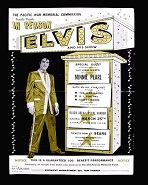


On Mar. 25, 1961 after Pres. Eisenhower signs Public Law 85-344 in 1858, allowing the Pacific War Memorial Commission to raise $500K, raising only $155K by 1960, causing Col. Parker to step in, Elvis Presley holds a benefit concert at the Bloch Arena in Pearl Harbor, Honolulu for the USS Arizona Memorial in Pearl Harbor, Hawaii, wearing a gold lame jacket with silver sequin lapels, singing 15 songs in 45 min., becoming his last concert for eight years; after the benefit raises $60K, donations pick up, and the goal of $500K is reached by Sept. On May 30, 1962 JFK dedicates the USS Arizona Memorial in Pearl Harbor, designed by Austrian-born Alfred Preis (1911-93), who was interned in Sand Island after the 1941 Pearl Harbor attack as a Germanic alien; it is criticized as a "squashed milk carton", which Preis counters by claiming it shows defeat being turned into victory; on May 5, 1989 it is dedicated as a nat. historic landmark.


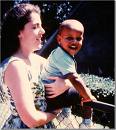
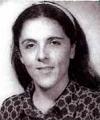
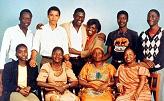
On Aug. 4, 1961 (7:24 p.m.) (Fri.) 6'1" 170-190 lb. U.S. Dem. pres. #44 (2009-) (black) (lefty) (Christian) (closet Muslim?) (closet Marxist?) (Freemason?) Barack (Baraka) (Heb. "baruch" = blessed) "Barry" Hussein (Arab. "handsome") (grandson of Muhammad) Obama (Kenyan "crooked") II (Jr.) is allegedly born in Kapilani Maternity and Gynecological Hospital in Honolulu, Hawaii (really in Mombasa, Kenya, then covered up to make him eligible for the presidency?); first African-Am. U.S. pres.; son of alcoholic polygamist Communist Muslim-turned-atheist Barack Hussein Obama Sr. (1936-82) of Nyang'oma Kogelo, Siaya District, Kenya (first African student at the U. of Hawaii) and white leftist anthropologist mother Stanley Ann Dunham (1942-95) of Wichita, Kan. (of British descent, with a pinch of Irish, incl. distant cousin Dick Cheney) (met in 1960 at the U. of Hawaii in a Russian language class, and married on Feb. 2, 1961 in Wailuku, Maui, Hawaii, when interracial marriage was illegal in more than half of U.S. states); his father's father was a cook for the British, who called him boy; he meets his father only once as a child; Muslim law considers him a Muslim at birth; "I got my middle name from somebody who obviously didn't think I'd ever run for president"; grows up to consider himself black; his parents separate in 1963, and divorce in Jan. 1964, after which she marries Indonesian Muslim Lolo Soetoro (1935-87) in 1966, living with him in Indonesia until 1972 then returning to Hawaii with her son (who returned in 1971 to go to school), and making periodic trips back to Indonesia as well as Pakistan on behalf of the Ford Foundation and the U.S. Agency for Internat. Development (USAID) (a CIA front); she doesn't divorce Soetoro until 1980; in 1965 he attends the Muslim Besuki Elementary School in Jakarta, Indonesia for less than a year, followed by three years at the Roman Catholic St. Francis Assisi Elementary School in Jakarta; from age 10 he is raised in Honolulu by his white maternal grandparents Madelyn Lee Payne "Toot" (Hawaiian "Tutu" = grandmother") Dunham (1922-2008) and Stanley Armour Dunham (1918-92); while at Harvard U., Barack Sr. marries Ruth Nidesand (Ndesandjo), who bears son Mark Okoth Obama Ndesandjo; his Indonesian-born half-sister Maya Kassandra Soetoro-Ng (1970-) also lives in Honolulu; educated at Columbia U. and Harvard Law School; first black pres. of the Harvard Law Review (1990), and first never to be pub. while in school; husband (1992-) of Michelle Obama (1964-); his first job after graduating from Columbia U. in 1983 is with Henry Kissinger at the CIA front Business Internat. Corp.; 2009 Nobel Peace Prize; distant relation of U.S. presidents George H.W. Bush, George W. Bush, Gerald Ford, LBJ, Harry S. Truman, and James Madison (1751-1836), also Sir Winston Churchill and Robert E. Lee: "To say that force is sometimes necessary is not a call to cynicism, it is a recognition of history."

On Nov. 22, 1961 Norman Taurog's musical comedy film Blue Hawaii (Paramount Pictures) debuts, written by Hal Kanter and starring Elvis Presley in his biggest hit movie ($4.2M box office) as ex-GI Chadwick Gates (a stretch?), who disobeys his mother Sarah Lee (Angela Lansbury) to work as a tour guide at the agency of his babe Maile Duval (Joan Blackman); features "Hawaiian Wedding Song" and "Can't Help Falling in Love", plus such jewels as "Song of the Shrimp", "Queenie Wahine's Papaya", and "Do the Clam"; watch trailer.
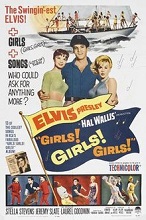
On Nov. 21, 1962 Norman Taurog's musical comedy film Girls! Girls! Girls! (Paramount Pictures) debuts, produced by Hal B. Wallis, starring Elvis Presley as Hawaiian fishing guide Ross Carpenter, who hooks up with nightclub singer Robin (Stella Stevens) and Laurel (Laurel Goodwin); features the hit song "Return to Sender"; does $2.6M box office; watch trailer.

On Dec. 2, 1962 Mont.-born Dem. John Anthony Burns (1909-75) (former Honolulu police officer) becomes Hawaii gov. #2 (until Dec. 2, 1974), going on to expand the U. of Hawaii incl. its new Aloha Stadium, promote Hawaii as a center for oceanography, and build a new state capitol bldg.

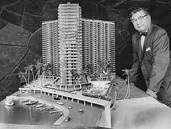

On Feb. 29, 1964 the 3-wing Y-shape $27M Ilikai Hotel (begun 1961) at the W end of Waikiki in Honolulu, Hawaii opens, developed by local self-made millionaire ("the Chinese Rockefeller") Chinn Ho (1904-87) (first Asian to crack Hawaii's bamboo curtain and get his foot in the door of the haole establishment incl. buying the Honolulu Star-Bulletin in 1961), and designed by Seattle Space Needle architect John Graham Jr. (1908-91), becoming the first luxury high-rise hotel in Hawaii, featuring 504 hotel rooms with kitchens, 509 condominium units, and an external glass elevator running up to the rooftop restaurant; the 360-room Yacht Harbor Tower is immediately added; the bldg. is featured in the balcony scene in the opening credits of the TV series Hawaii Five-O, with one of the detectives in the series named Chin Ho Kelly.
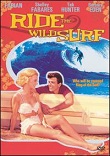
On Aug. 5, 1964 Don Taylor's Ride the Wild Surf (Columbia Pictures) debuts, a beach party film featuring big wave surf movie surfing action on Waimea Beach on the North Shore of Oahu, starring Fabian, Tab Hunter, and Peter Brown as surfers Jody Wallis, Steamer Lane, and Chase Colton, who surf when not chasing beach babes Lily Kilua (Susan Hart), Brie Matthews (Shelley Fabares), and Augie Poole (Barbara Eden); does $1.4M box office; title song by Jan Berry, Roger Christian, and Brian Wilson is sung by Jan & Dean; watch trailer.
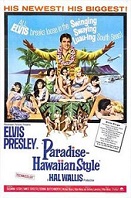
On June 9, 1966 Michael D. Moore's musical comedy film Paradise, Hawaiian Style (Paramount Pictures) debuts, starring Elvis Presley as airline pilot Rick Richards, who starts a helicopter charter business with Danny Kohana (James Shigeta); Elvis' 3rd and last Hawaii film; does $2.5M box office on a $2M budget; watch trailer.

On June 15, 1966 Bruce Brown's The Endless Summer debuts, starring Mike Hynson and Robert August as surfers going around the world to chase the summer, incl. Australia, New Zealand, Tahiti, Hawaii, Senegal, Ghana, Nigeria, and South Africa; cool surf rock soundtrack by The Sandals; does $5M U.S. and $20M worldwide box office on a $50K budget, causing the surf-and-travel craze, popularizing surfing in Calif. and Australia and sparking a series of surf movies; followed by the sequels "The Endless Summer II" (1994), showing the shortboard in use, and "The Endless Summer Revisited" (2000); watch clip from The Endless Summer; watch trailer of The Endless Summer II.
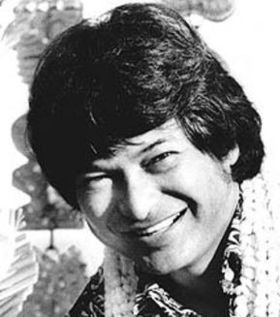
In fall 1966 Honolulu, Hawaii-born singer Don Ho (Donald Tai Loy Ho) (1930-2007) releases Tiny Bubbles (#57 in the U.S.), which becomes his signature song, going on to perform it to zillions of tourists while wearing raspberry-tinted sunglasses.
In 1966 after the Hawaiian Fashion Guild launched Operation Liberation in 1962, distributing two Aloha shirts to every member of the Hawaiian legislature, causing the Hawaiian Senate to pass a resolution recommending that they be worn all summer starting on Lei Day, Aloha Friday begins, with employers encouraging employees to wear them on Fridays a few months each year; the tradition slowly spreads to Calif. and then throughout the Western world, becoming known as Casual Friday.

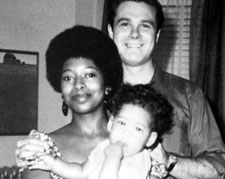
6/6+6/67 and 6/7+6/7 are Thoroughly Good Black-White Love Days at the U.S. Zoo? Open season for black bucks to go after white wimmen? On June 12, 1967 ("Loving Day") the U.S. Supreme (Warren) Case rules unanimously in Loving v. Virginia; to strike down the 1924 Va. Racial Integrity Act, along with all 16 state laws against "miscegenation" (interracial marriage) (mistaken generation?), legalizing the 1958 marriage of Mildred Delores "Bean" Loving (nee Jeter) (1939-2008) (black) and Richard Perry Loving (1933-75) (white); no surprise, after a decade of civil rights action and ongoing black race riots it causes little public criticism by whites, although S.C. doesn't officially repeal its anti-miscegenation law until 1999; meanwhile on Mar. 17 African-Am. aspiring novelist Alice Walker (1944-) marries Jewish civil rights atty. Melvyn Roseman "Mel" Leventhal, and relocates with him from New York City to Jackson, Miss. to stick it in their faces as the state's first legally married interracial couple; on Nov. 17 1969 (17 mo. after MLK Jr. is shot) they have biracial daughter Rebecca Leventhal Walker (1969-); they divorce in 1976, after which Alice becomes estranged with her daughter, becomes lovers with singer Tracy Chapman, and becomes a supporter of the Palestinian cause.
In 1967 the Mauna Kea Observatories on the Big Island of Hawaii are established, enjoying good clear dark skies with good weather and near-equatorial location.
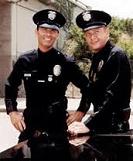

On Sept. 21, 1968 (Sat.) the Los Angeles, Calif. cop series Adam-12 (Adam precinct, car 12), starring Martin Sam Milner (1931-2015) and Kent Franklin McCord (1942-) debuts on NBC-TV for 174 episodes (until May 20, 1975), helping the U.S. TV public know that their cops are square, honest and hip too, and mostly white; on Sept. 26 copycat Hawaii Five-O debuts for 278 episodes (until Apr. 26, 1980) on CBS-TV with Brooklyn-born actor Jack Lord (John Joseph Patrick Ryan) (1920-98) as Detective Steve "Book 'em, Dano" McGarrett (HQ in 'Iolani Palace) (after Richard Boone, who persuades Leonard Freeman to film exclusively in Hawaii rather than in S Calif. bugs out), and James Gordon MacArthur (1937-) as his partner Dan "Danno" Williams, who try to prove that paradise doesn't spoil cops?; Det. Chin Ho Kelly, played by Kam Fong (1918-2002) does ballistics testing; the longest-running U.S. crime TV show until "Law & Order" in 2003; the Hawaii Five-O Theme (Walk Don't Run) by the Ventures becomes a hit.
In 1968 Hawaii County on the Big Island of Hawaii institutes a charter form of govt., electing its first mayor, Dem. Shunichi Kimura (until May 1974).
On Jan. 14, 1969 the 8-nuclear-reactor aircraft carrier (world's largest warship) USS Enterprise is ripped by weapons explosions while on a training mission off Pearl Harbor, Hawaii, setting a fire on the stern and killing 28 and injuring 314, destroying 15 aircraft and costing $126M - the original Kobayashi Maru dilemma?

On Sept. 23, 1970 Richard O. Fleischer's Tora! Tora! Tora! (20th Cent. Fox) debuts, starring Martin Balsam as Adm. Husband E. Kimmel, Joseph Cotten as U.S. secy. of war Henry L. Stimson, E.G. Marshall as Col. Rufus S. Bratton, James Whitmore as Vice-Adm. William F. Halsey, and Japanese actors Takahiro Tamura as Cmdr. Mitsuo Fuchida and Eijiro Tono as Vice-Adm. Chuichi Nagumo in a retelling of the Dec. 7, 1941 Pearl Harbor attack; Japanese dirs. Toshio Masuda and Kinji Fukasaku are given a crack at the film to make it balanced?; does $29.5M box office on a $25.5M budget; watch trailer.
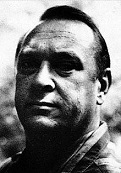
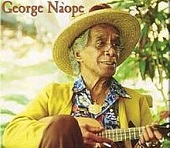
In 1970 the Second Hawaiian Renaissance begins, inspired by the 1964 essay "On Being Hawaiian" by John Dominis Holt IV (1919-93) and the Merrie Monarch Festival in Hilo, established in 1964 by George Na'ope (1928-2009).


On Oct. 12, 1971 the U.S. House of Reps. by 354-23 passes the Equal Rights Amendment (ERA), originally drafted by Alice Stokes Paul (1885-1977) in 1923 and sponsored by Martha Wright Griffiths (nee Wright) (1912-2003) (D-Mich.); "Equality of rights under the law shall not be denied or abridged by the United States or by any State on account of sex"; after Hawaii becomes the first state to ratify it, it is ratified in ?.

In 1972 Am. geophysicist William Jason Morgan (1935-) of Princeton U. pub. the theory that the Hawaiian Islands were formed as the Pacific Plate moved over the Emperor Seamounts.
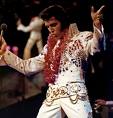
On Jan. 14, 1973 Elvis Presley's Aloha From Hawaii Via Satellite Concert from Honolulu Internat. Center becomes the first worldwide telecast by an entertainer, and is watched by 1-1.5B, more people than the 1969 Apollo 11 Moon landing.

On Oct. 17, 1973 after ailing (cancer) gov. (since Dec. 2, 1962) John Anthony Burns is declared incapacitated, Honolulu-born Dem. lt. gov. #4 (since Dec. 2, 1970) George Ryoichi Ariyoshi (1926-) (son of Japanese immigrants) becomes Hawaii gov. #3 (until Dec. 1, 1986), going on to guide the state through its first economic recession and get elected twice.
On Jan. 4, 1976 protesters occupy battered Kaho'olawe Island in Hawaii to reclaim it from the U.S. Navy, which used it as a shelling and bombing target since 1941; on May 8, 1994 they return to celebrate its being handed over to the state.
In 1978 the first Ironman Triathlon is held in Honolulu, Hawaii.
In 1978 the Na Hoku Hanohano Awards (Hawaiian "star of distinction") are established by KCCN-AM radio personality Krash Kealoha and station owner Sydney Grayson, later being selected by members of the the Hawai'i Academy of Recording Arts (founded 1982) as the Hawaiian Grammy Awards, with the awards presented each May.
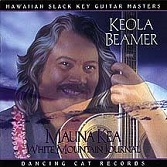
In 1978 Hawaiian slack-key guitar player Keolamaikalani Breckenridge "Keola" Beamer (1951-) releases the album Honolulu City Lights, featuring the track Honolulu City Lights, which becomes a Hawaiian music hit, covered in 1986 by The Carpenters.

In 1978 Honolulu-born 6'2" 750 lb. Hawaiian singer and ukelele player Israel Ka'ano'i Kamakawiwo'ole (Hawaiian "the fearless eyed") (1959-97) AKA Brother IZ releases the song Hawai'i '78, lamenting what the haoles have done to the land; on Nov. 1, 1993 he releases the album Facing Future, which incl. Somewhere Over the Rainbow/What a Wonderful World, becoming the best-selling album by a Hawaiian artist (until ?).
On Jan. 27, 1980 the first 1980 Pro Bowl game is held in Aloha Stadium in Honolulu, Hawaii; the NFC defeats the AFC 37-27; on Jan. 25, 2015 the venue is moved to the U. of Phoenix Stadium in Glendale, Ariz., followed by Aloha Stadium in Honolulu on Jan. 31, 2016, and Camping World Stadium in Orlando, Fla. on Jan. 29, 2017.

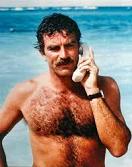
On Dec. 11, 1980 (Thur.) the TLW-favorite Glen A. Larson and Donald P. Bellisario series Magnum, P.I. debuts on CBS-TV for 154 episodes (until May 1, 1988), complete with its own cool Magnum, P.I. Theme, starring hunky Coors-swigging eternal-boy Detroit-born Tigers fan Thomas William "Tom" Selleck (1945-) as Vietnam Vet Thomas Sullivan Magnum IV, who sponges as a security specialist off the posh 200-acre Robin's Nest estate of mysterious lurid pulp fiction novelist Robin Masters (voiced by Orson Welles) in Honolulu, Oahu, Hawaii, which is run by quirky English major domo Jonathan Quayle Higgins III, played by John Benedict Hillerman (1932-2017), who commands Doberman Pinschers Zeus and Apollo, and uses the master's Ferrari 308 GTS as his carrot-stick, while Magnum forever tries to prove that he's the real Robin Masters; Roger Earl Mosley (1938-) plays Vietnam War buddy Theodore Calvin AKA T.C., who runs the Island Hoppers heli business and gives him free rides for his missions while calling Higgins "Higgy Baby"; Lawrence Francis "Larry" Manetti (1943-) plays King Kamehameha Club mgr. Orville Wilbur Richard "Rick" Wright, another Vietnam War vet friend who has a fetish for Humphrey Bogart and maintains connections with local underworld boss Francis "Icepick" Hofstetler, played by Elisha Cook Jr. (1903-95); Jeffery Neill "Jeff" MacKay (1948-) (cousin of Robert Redford) plays Magnum's friend Navy Intel Lt. Mac MacReynolds, who gets killed off and returns as lookalike char. Jim Bonig; William Lance LeGault (Legault) (1935-) plays Magnum's nemesis Marine Corps intel Col. Buck Greene, whose asst. Lt. Maggie Poole, played by Jean Bruce Scott (1956-) sides with Magnum; Gillian Dobb (1929-2001) plays Higgins' ugly but cultured babe Agatha Chumley; Kwan Hi Lim (1931-) plays Honolulu police dept. homicide Lt. Yoshi Tanaka, who likes to impersonate John Wayne; Kathleen Lloyd (1948-) plays Honolulu asst. DA Carol Baldwin; on Nov. 19 a heli crash kills stuntman Robert Vanderkar.


On June 12, 1981 Steven Spielberg's Raiders of the Lost Ark (Paramount Pictures) debuts, becoming a quantum leap in action movies, making Chicago, Ill.-born Harrison Ford (1942-), who plays ophidiophobic (snake-loathing) Indiana Jones (after Tom Selleck turns it down) a household name as he and his colleague Marcus Brody (Denholm Elliott) and Egyptian sidekick Sallah (John Rhys-Davies) (after Danny DeVito turn it down) and feisty jilted girlfriend Marian Ravenwood (Karen Allen) battle rival French archeologist Rene Belloq (Paul Freeman) and a nasty bunch of Nazis incl. Wolf Kahler as sadistic Col. Dietrich, and Ronald Lacy as Maj. Arnold Toht in the 1930s to gain control of the fabled Jewish Ark of the Covenant; Alfred Molina plays Satipo; the first 3 min. has more action than most other movies, and it ramps up from there, exhausting every plot trick and never suffering from a boring moment where people just stand around or walk or talk; George Harris plays Katanga; Terry Richards plays the swordsman whom Indy shoots; the booby-trapped Peruvian temple and Amazonian jungle are portrayed by Kipu Ranch and the Anahola Mts. in Kauai, Hawaii; shot in 73 days for $18M; #1 film of the year, grossing $242M in the U.S. and $389.9M worldwide on an $18M budget; watch trailer.
On Aug. 11, 1982 a nitroglycerin time bomb secreted under seat 47K en route from Baghdad to Tokyo explodes 140 mi. NW of Hawaii on Pan Am Flight 830 (Boeing 747) en route from Tokyo to Honolulu, killing 16-y.-o. Japanese teenie Toru Ozawa and injuring 15 of 285 aboard, incl. his parents, blowing a 1'x3' hole in the floor of the plane causing a rapid descent from 21K ft.; in June 1988 Jordanian 15th of May Group for the Liberation of Palestine terrorist Mohammed Rashed (1947-) is arrested in Athens for the bombing, convicted on Jan. 8,1992 and sentenced to 18 years, and is released in 1996 after serving 8 years because fo Greek Orthodox Church anti-Semitism?; in Dec. 2002 he cops a guilty plea, and in 2006 a reluctant U.S. court convicts him again and gives him a short 7-year sentence, to be followed by deportation in 2013; the May 15 Group later becomes the al-Aqsa Martyrs Brigade.
On Nov. 23, 1982 Hurricane Iwa (Hawaiian "frigatebird", "thief") passes within 25 mi. of Kauai, devastating it along with Niihau and Oahu with 100 mph winds and 30-ft. waves, becoming the first major hurricane to hit Hawaii since statehood in 1959, killing four, damaging or destroying 2,345 bldgs. and 1,927 houses and leaving 500 homeless, causing $312M damage.
In 1982 Kukui, Kauai, Hawaii receives a record 704.83 in. of rainfall; in Mar. Mt. Waialeale in Kauai receives 148.83 in.
On Jan. 3, 1983 the Pu'u O'o Vent of Kilauea Volcano on the Big Island of Hawaii (home of Pele) begins erupting (until ?).
On Nov. 16, 1983 a 6.7 earthquake on Hawaii Island (Big Island) causes heavy property damage and collapses trails in Volcanoes Nat. Park.
Mother Earth salutes Orwell? On Mar. 25-Apr. 15, 1984 Kilauea Crater (largest active crater on Earth) on Hawaii Island's 13,680-ft. Mauna Loa ("long mountain") volcano (world's largest volcano and most massive mountain) near extinct 13,796-ft. Mauna Kea ("white mountain") volcano erupts; the ocean floor is 18K ft. below sea level, making for a 32K-ft. rise from base to summit, greatest of any mountain on Earth; next eruption in ? - that Mauna has pele of natural cleavage?
In 1984 astronomers at Cambridge U. use an 88-in. reflector in Hawaii to make the first astronomical measurements using interferometry.
On May 29, 1985 the Honolulu Strangler kills his first victim, 25-y.-o. Vicky Gail Purdy, going on to kill five more women in Honolulu by 1986, becoming Hawaii's first known serial murderer; he is not caught until ?


On Feb. 7, 1986 elections in the Philippines gives a V to the opposition Nat. Movement for Free Elections, but Ferdinand Marcos ignores the popular vote and rigs the results, proclaiming a V, which finally tips the military to the side of the ever-growing masses of demonstrators; on Feb. 15 the Philippine nat. assembly authorizes six more years for Marcos; too bad, on Feb. 22-25 Marcos is deposed by the People Power Uprising, and he flees with his family and loot for Hawaii on Feb. 25 after 20 years of rule; on Feb. 26 Corazon C. Aquino (1933-2009), wife of assassinated opposition party leader Benigno Servillano "Ninoy" Aquino Aquino, Jr. (1932-83) becomes pres. of the Philippines (until June 30, 1992), freeing political prisoners and cleansing the govt. of Marcos puppets, then leading the drafting of a new constitution while arranging a ceasefire with the Maoist NPA guerrillas and stifling coup attempts by Marcos' fifth column; too bad, even though the IMF gives them more credit, the economy stays stagnant; military cmdr. Fidel Ramos is a key figure in Marcos' downfall, and later (1992) becomes pres.; U.S. rep. Stephen Joshua Solarz visits one of Imelda Marcos' opulent palaces and publicizes her massive shoe collection, and works to aid Corazon's admin., causing her to dub him "Lafayette of the Philippines".

On Dec. 1, 1986 Honkaa-born Dem. lt. gov. #7 (since Dec. 2, 1983) John David Waihe'e (Waihee) III (1946-) becomes Hawaii gov. #4 (until Dec. 5, 1994), becoming the first native Hawaiian U.S. state gov.
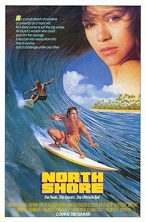
On Aug. 14, 1987 William Phelps' North Shore (Universal Pictures) debuts, starring Matt Adler as h.s. student Rick Kane, who wins a wave tank surfing contest in Ariz. and heads to Hawaii for the summer to try to become a prof. surfer; features real-life prof. surfers Laird Hamilton, Lance Burkhart, Derek Ho, Gerry Lopez, Mark Occhilupo, Robbie Page, Alex Rogers, and Shaun Tomson, becoming a cult favorite; does $3.8M box office; watch trailer.

In 1987 after participating in the Ironman Triathlon in Hawaii, Dan Empfield (1957-) invents the Quintana Roo Triathlon Speed Wetsuit.
In 1988 Hyatt Regency Waikoloa Village on the South Kohala coast of the Big Island of Hawaii opens, featuring a lagoon with Atlantic bottlenose dolphins; in 2002 it is acquired by Hilton Hotels; in 1996, 1999, 2001, 2008, and 2014 the TV game show Wheel of Fortune tapes episodes there.
On Feb. 24, 1989 a cargo door blows off United Air Lines Flight 811 (Boeing 747-122) flying near Hawaii, sucking nine passengers into space.
On Mar. 2, 1989 the tanker Exxon Houston runs aground in Hawaii, spilling 117K gal. of oil.
On Sept. 28, 1989 exiled Philippine dictator pres. #10 (1965-86) Ferdinand Marcos (b. 1917) dies in Honolulu, Hawaii; his remains are interred in a refrigerated crypt in his hometown of Ilocos Norte.
On July 11, 1991 a total solar eclipse is visible in Hawaii and Mexico.

On Sept. 14, 1991 the Miss America 1992 (65th) Pageant at Boardwalk Hall in Atlantic City, N.J. picks Carolyn Suzanne Sapp (1967-), who becomes the first Miss Hawaii to win, going on to admit that she's still in love with pro football running back Nuu Faaola (1964-), who battered her, starring in the autobio. film "Miss America: Behind the Crown" and becoming a spokesperson for domestic violence victims and founding Safe Places for Abused Women and Children, and Give Back a Smile.

On Aug. 9, 1992 Wichita, Kan.-born Stanley Ann Dunham (1942-95), mother of future Pres. Barack Obama is awarded a doctorate in anthropology from the U. of Hawaii under the supervision of Alice Greeley Dewey (1928-), with her 1,043-page dissertation titled "Peasant Blacksmithing in Indonesia: Surviving and Thriving Against All Odds", which claims that Indonesian villagers are just as capitalistic as Westerners, but are kept down by the power elites, who steer all the capital to themselves.
On Sept. 11, 1992 Category 4 (145 mph) Hurricane Iniki (Hawaiian "strong and piercing wind") (formed Sept. 5) hits Kauai, Hawaii, becoming the first hurricane to hit Hawaii since Hurricane Iwa in 1982, and the first major hurricane since Hurricane Dot in 1959, killing six, damaging 1.4K houses and severely damaging 5K more, causing $3.1B damage before it dissipates on Sept. 13, becoming the most costly tropical cyclone to hit Hawaii (until ?).
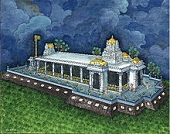
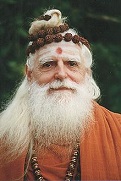
In 1992 the $16M white granite San Marga Iraivan Temple in Kauai, Hawaii (first all-stone temple in the U.S.) is begun under the dir. of Oakland, Calif.-born Shaivism convert Satguru Sivaya Subramuniyaswami (Robert Hansen) (1927-2001) AKA Gurudeva, founder of the mag. Hinduism Today (1979), and 1985 inventor of Pancha Ganapti, the Hindu alternative to Christmas and Hanukkah; it is not finished until ?.
In 1992 the Sam Choy Poke Festival in Hawaii is founded by master chef Sam Choy to promote the yummy Hawaiian raw fish treat of poke (pr. poh-keh), incl. seaweed and kukui nut relish.
On Nov. 23, 1993 after the U.S. Senate passes it by 65-34 and the U.S. House by a two-thirds voice vote, Pres. Clinton signs U.S. Public Law 103-150 (Apology Resolution), acknowledging that the 1893 U.S. invasion of Hawaii was illegal, but that they're not giving it back, pissing off the Hawaiian sovereignty movement, led by Dennis Pu'uhonua "Bumpy" Kanahele, who leads 300 in an occupation of Makapu'u Beach, which lasts 15 mo. until Hawaiian Gov. John D. Waihee II negotiates a deal giving them the 45-acre area above Waimanalo in the foothills of the Ko'olau Mountains, which becomes Pu'uhonua (Hawaiian "sanctuary", "place of refuge") o Waimanalo - have a slice of Hawaiian pizza?

On Dec. 2, 1994 after defeating Maui mayor Linda Lingle by 1 percentage point, Honolulu-born Dem. lt. gov. #8 (since Dec. 2, 1986) Benjamin Jerome "Ben" Cayetano (1939-) becomes Hawaii gov. #5 (until Dec. 2, 2002), becoming the first Filipino-Am.

On July 28, 1995 Kevin Reynolds' Waterworld (Universal Pictures) ("A man with a serious drinking problem") debuts, gobbling up $172M in production and causing star Costly Kevin, er, Kevin Costner to call in his chips, becoming known as Fishtar and Kevin's Gate; stars Costner as man-fish Mariner, who helps the good human survivors of global flooding, esp. his babe Jeanne Tripplehorn look for Dryland while fighting Dennis Hopper's mean Smokers on a floating set anchored off Hawaii that is once lost during a tropical storm; does $264.2M box office; it could be the best or the worst sci-flick yet made, wait till the secondary markets are milked?; watch trailer.
On July 16-Aug. 9, 1996 a swarm of 4,070 earthquakes is recorded in the Lo'ihi (Loihi) Seamount 22 mi. SE of the Big Island of Hawaii 3K ft. (975m) below sea level on the flank of Mauna Loa, becoming a record (until ?); on Oct. 5 it is reported to be rising so fast that it will break the surface in only 50K years.
On Dec. 3, 1996 Hawaiian judge Kevin Chang rules that the state must issue same-sex marriage licenses, making Hawaii the 1st state.
In 1996 the annual people's choice Hawaii Music Awards are founded by Johnny Kai, and presented by the Music Foundation of Hawaii.
On June 22, 1998 "Mighty Mo", the USS Missouri (on which Japanese officials formally surrendered) arrives in Hawaii, to be retired and reopened as a museum in 1999, anchored 1K ft. away from the USS Arizona memorial.
In 1998 Hawaiian banana production reaches a record of 21M lbs., up 57% in one year.
On May 9, 1999 (Mother's Day) a landslide at Sacred Falls State Park in Hau'lula on the N shore of Oahu, Hawaii kills eight hikers and injures dozens.
In Nov. 2000 after 10 years the U.S. govt. finishes chemical weapons disposal on 3.2K-acre Johnston (Kalama) Island (Atoll) 860 mi. SW of Honolulu, Hawaii (claimed by the U.S. since Mar. 19, 1858), turning it into a wildlife preserve.
On Dec. 4, 2000 Pres. Clinton issues Executive Order 13178 creating the 99.5K-sq.-mi. Northwestern Hawaiian Islands Coral Reef Reserve, protecting the coral reefs, atolls, submerged lagoons and marine life in an area as large as Fla.; the new reserve contains 70% of U.S. coral reefs; a public comment period begins in 2002, and Hawaii Gov. Linda Lingle declares parts of it a state marine refuge in 2005, after which on June 15, 2006 Pres. George W. Bush signs Proclamation 8031, designating it a nat. monument.

In 2000 U.S. Sen. (D-Hawaii) (1990-2013) Daniel Kahikina Akaka (1924-) (first U.S. Sen of Native Hawaiian ancestry) proposes the retro racial separatist (caca?) Akaka Bill (Native Hawaiian Govt. Reorg. Act), providing for federal recognition of Native Hawaiians similar to an Indian tribe, while prohibiting them from benefits available to federally-recognized Indian tribes incl. gaming, despite setting a precedent that could balkanize the U.S., and lack of support by Hawaiians; it doesn't pass until ?.
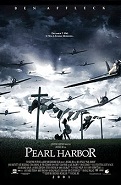
On May 21, 2001 Michael Bay's Pearl Harbor (Touchstone Pictures) debuts, produced by Jerry Bruckheimer and written by Randall Wallace, intertwining a silly unbelievable love story a la Titanic between Ben Affleck (Capt. Rafe McCawley) and Kate Beckinsale (Nurse Lt. Evelyn Johnson McCawley) with the big sneak attack; Alec Baldwin almost saves it with critics as Lt. Col. James Doolittle, which doesn't stop it from being a box office smash; #7 movie of 2001 ($199M box office U.S. and $449.2M worldwide on a $140M budget); watch trailer.
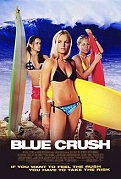
On Aug. 16, 2002 John Stockwell's Blue Crush (Imagine Entertainment) (Universal Pictures) debuts, based on the article "Life's Swell" by Susan Orlean, starring Kate Bosworth as hotel maid Anne Marie, who likes to surf Oahu's North Shore, hooking up with football player Matt Tollman (Matthew Davis) and Eden (Michelle Rodriguez); features cameos from real-life surfers incl. Layne Beachley, Tom Carroll, Bruce Irons, Jamie O'Brien, and Makua Rothman; does $51.8M box office on a $25M budget; watch trailer.

On Dec. 2, 2002 St. Louis, Mo.-born Repub. Linda Lingle (nee Cutter) (1953-) becomes Hawaii gov. #6 (until Dec. 6, 2010),
On Oct. 1, 2003 the Joint POW/MIA Accounting Command (JPAC) is established at Hickam AFB in Oahu, Hawaii to try to account for missing U.S. war veterans; on Jan. 30, 2015 after the U.S. govt. decides to coverup its own mess it is deactivated.
On Oct. 26, 2005 Mumbai, India-born Parsi Noshir Sheriarji Gowadia (1944-) of Haiku, Hawaii, who calls himself the father of the technology protecting B-2 stealth bombers from heat-seeking missiles is arrested for selling U.S. military secrets.
On June 15, 2006 140K sq. mi. Papahanaumokuakea Marine Nat. Monument in Hawaii is established by Pres. George W. Bush, giving refuge to 7K species incl. the endangered hawksbill sea turtle, the threatened green turtle, and the endangered Hawaiian monk seal; commercial fishing ends in 2011; in Aug. 2016 it is expanded to 583K acres by Pres. Obama.
On July 3, 2006 a U.S. federal judge issues a temporary restraining order barring the U.S. Navy from using a high-intensity sonar during war games because it could harm marine animals; on July 7 a settlement is reached barring the sonar from being used within 25 mi. of the new Northwestern Hawaiian Islands Marine Nat. Monument.
On Oct. 15, 2006 (7:07 a.m.) the 6.7 2006 Kiholo Bay Earthquake hits 13 mi. N of Kailua Konaon the W coast of Hawaii Island (the Big Island) near the Kona Airport, becoming the strongest since 1983; no fatalities are reported, but vacationers suffer from power outages; it does $100M damage.
On Mar. 22, 2007 Japanese real estate mogul Genshiro Kawamoto opens up eight of his 22 multi-million-dollar homes on Honolulu's Kahala Ave. to low income native Hawaiian families, letting them live rent-free for up to 10 years.
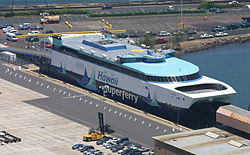
On Aug. 26, 2007 the $95M 349-ft. aluminum-hulled catamaran Hawaii Superferry makes its maiden run from Honolulu Harbor in Honolulu to Kahului Harbor in Maui despite protests from environmentalists, carrying 500 passengers and 150 cars in a 3-hour trip, with a max. cap. of 866 passengers and 282 subcompact cars; on Oct. 9 a Maui judge halts it pending environmental studies; on Oct. 31 the Hawaiian legislature votes to overrule all court decisions to allow it to resume service, which begins in Dec.; too bad, on Mar. 16, 2009 the Hawaiian Supreme Court rules the law unconstitutional, and the co. goes bankrupt, selling its ships Alakai and Huakai to the U.S. Navy at a steep loss.
On Apr. 30, 2008 members of the Hawaiian Kingdom Govt. (founded 2001) storm the old 'Iolani Palace in Honolulu, Hawaii and set up a govt. in exile, seeking to restore the Hawaiian monarchy under queen Mahealani Kahau, who last year fined the Hawaiian state govt. $7T, negotiating a deal to protest daily on the grounds via a public assembly permit (until ?).
On Sept. 4, 2008 (night) a U.S. Coast Guard HH-65 Dolphin heli crashes off Oahu, Hawaii while conducting search and rescue drills, killing four crew members.
On Oct. 24-25, 2008 Barack Obama takes off campaigning to go to Hawaii to visit his ailing white grandmother Madelyn Lee Payne "Toot" Dunham (1922-2008), who went without new clothes to help him pay for college tuition; she dies on Nov. 2, two days before the election; on Oct. 25 he's back it, denying a statement John McCain made that he's like George Bush.
On Dec. 26, 2008 a power failure in a thunderstorm in Hawaii blacks-out Oahu Island (pop. 900K), catching vacationing Pres. Obama.

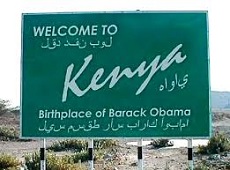




On Jan. 20, 2009 6'1" 170-190 lb. (black) (lefty) (Christian?) (closet Muslim?) (closet Marxist?) (Freemason?) (Leo) Barack (Baraka) (Heb. "baruch" = blessed) "Barry" Hussein (Arab. "handsome") (grandson of Muhammad) Obama (Kenyan "crooked") II (Jr.) (1961-) (18 letters in "Barack Hussein Obama" = 6 + 6 + 6?) becomes Dem. pres. #44 of the U.S. (first black) (until Jan. 20, 2017); to be eligible, he claims that he was officially born in Honolulu, Hawaii, and on Aug. 13, 1961 (Sun.) the Honolulu Advertiser carried a classified ad on page B-6 saying "Mr. and Mrs. Barack H. Obama, 6085 Kalanianaole Hwy., son, Aug. 4" (address of Ann Dunham's parents), although many believe it was really in Mombasa, Kenya, as stated on Mar. 25, 2010 by a member of the Kenyan Parliament, the Kenyan ambassador to the U.S., and British intel expert Michael Shrimpton, then covered up to make him eligible for the presidency, sparking the neverending Birther Controversy, which Obama fuels by his dogged self-coverup, having spent $1.4M blocking access to documents needed to reconstruct his past while getting his followers to accuse "birthers" of everything from racism to lunacy; on May 2, 2010 Jewish Repub. Hawaii gov. (2002-10) Linda Lingle (1953-) states that he was born in Kapi'olani Hospital in Honolulu; he has also been claimed to have been born at Queen's Medical Center in Honolulu, but neither have produced his birth certificate, although on Oct. 31, 2008 Hawaiian health dir. Chiyome Leinaala Fukino (appointed by Lingle) stated that "Hawaii has Obama's original birth certificate on record", then reiterated the claim on July 27, 2009, without actually producing it for public inspection, while possibly amending state records to match a birth certificate posted on Obama's campaign Web site; Obama benefitted from the lack of a state or federal law requring anyone to officially verify his long form hospital-generated birth certificate; ask his wife Michelle Obama, who calls him "a Kenyan, a black man, a man of great statesmanship who they believe could change the fate of the world" in a Dec. 2007 fundraiser in Tampa, Fla.; in June 2010 former senior Honolulu elections clerk (in 2008) Tim Adams claims that Obama was definitely not born in Hawaii, and that a long form birth certificate doesn't exist in that state, signing an affidavit to that effect on Jan. 20, 2011; in Dec. 2016 Ariz. Sheriff Joe Arpaio reveals that Obama's alleged long form birth certificate was copied from that of Johanna Ah'nee; not that the place of birth can change the fact that his mother is a natural born U.S. citizen (one from birth, not later legal action), although the fine print may disqualify her, she was only 17, or maybe the fact that his daddy's a British subject voids it, because as U.S. Rep. (R-Ohio) John Armor Bingham (1815-1900), principal author of the Fourteenth Amendment (1868) put it: "Every human being born within the United States of parents not owing allegiance to any foreign sovereignty is, in the language of the Constitution itself, a natural born citizen"; it was U.S. Sen. (R-Mich.) Jacob Merritt Howard (1805-71) who authored the Citizenship Clause of the 14th Amendment (he also helped Abe Lincoln draft the 13th Amendment abolishing slavery), and Bingham was referring to some prior legislation; however, the real issue is whether a person who has dual allegiance is a natural born citizen and eligible to be president, and Obama's birth certificate, since it was issued officially by the state of Hawaii proves that his father was Barack Sr., who wasn't a U.S. citizen, forming a nail in his coffin because even a naturalized citizen, who isn't eligible, must swear allegiance to the U.S. and renounce all other allegiances; of course Obama has shown no allegiance to Britain, he more likely despises it, but he might have allegiance to Kenya, but then, it's so tiny who cares; not that while he's in power any court will try to oust Obama any more than they did friggin' president Chester Alan Arthur (1829-86), who might have actually been born in Canada 15 mi. N of the U.S. border. Since Obama's father was not a naturalized citizen when he was born, he is disqualified by the Constitution from eligibility for president no matter where he was born?; maybe both parents have to be U.S. citizens if he's not born on U.S. soil to satisfy diehards, what do you say, you're the man or at least the little dude; on Dec. 28, 2010 new (since Dec. 6) Hawaiian Dem. gov. #7 Neil Abercrombie (1938-) announces that would put the Birther controversy to rest by releasing indisputable evidence that Obama was born in Honololu, but no surprise, on Dec. 30 he suddenly goes mum, then in Jan. 2011 virtually admitted that a long-form hospital-generated birth certificate for Obama can't be found in Hawaii's Dept. of Health vital records, instead suggesting that there is some other kind of record that he will make available later (made by Obama's grandparents?)' the whole issue was started by Obama, so why doesn't he finish it by getting the *!?!* birth certificate and showing it to the world?; let me play Kevin Pollak in "A Few Good Men": Could that be because there's something on it he wants to hide?; is he unable to let the public see the original birth certificate because the state of Hawaii will only let him look at it in private? Can't he use his power as U.S. pres. to order Hawaii to make it public?; too bad, on Jan. 20, 2011 former Hawaii elections clerk (May-Sept. 2008) Tim Adams signs an affidavit that he was told by his supervisors that no long form hospital-generated birth certificate ever existed for Barack Obama Jr. at Queens Medical Center or Kapiolani Medical Center in Honolulu.
On Jan. 23, 2009 the New York Times pub. Surfing's Dark Side on the North Shore, about the Wolfpak surfer gang who police the break at Oahu's Banzai Pipeline.
On May 28, 2010 Hawaii becomes the first U.S. state to ban possession or sale of shark fins.

On Oct. 4, 2010 Honolulu, Hawaii-born singer-songwriter Bruno Mars (Peter Gene Hernandez) (1985-) releases his debut album Doo-Wops & Hooligans (#3 in the U.S.), which features the tracks Just the Way You Are (#1 in the U.S.), Grenade (#1 in the U.S. and U.K.), and The Lazy Song. Album #2 Unorthodox Jukebox (Dec. 7, 2012) (#2 in the U.S.) (#1 in the U.K.), which features Locked Out of Heaven (#1 in the U.S.). Album #3 24K Magic (Nov. 18, 2016) (#2 in the U.S.) (#3 in the U.K.) (2M copies), which features That's What I Like (#1 in the U.S.), and 24K Magic (#4 in the U.S.) (#5 in the U.K.).

On Dec. 6, 2010 Buffalo, N.Y.-born Dem. Neil Abercrombie (1938-) becomes Hawaii gov. #7 (until Dec. 1, 2014), going on to end investigations into Pres. Obama's birth certificate, and sign a law legalizing civil unions in Feb. 2011, followed by a law legalizing same-sex marriage on Nov. 13, 2013, becoming the most unpopular state gov. in the U.S. as of Oct. 2011 (30% approval), losing reelection.
In Mar. 2011 billionaire real estate celeb Donald Trump (1946-) begins making moves to announce his Repub. candidacy for U.S. pres., saying that "I have some real doubts" that Obama was born in the U.S., and dissing him for not releasing his birth certificate, saying there might be something on it he doesn't want people to see, such as that it lists him as Muslim, or worse, maybe Obama originally had a different surname and father; Trump reportedly sent investigators to Hawaii on the trail of it, stay tuned; he also claims that Obama spent $2M+ trying to keep his birth certificate, college transcripts, etc., sealed, when actually that number is little more than speculation; Orly Taitz claims that it was more than $5M, paid to nat. law firm Perkins Cole, but then, signing Executive Order 13489 (Jan. 21, 2009) sealing all his records didn't cost him a cent, did it?
On Apr. 7, 2011 the Hawaiian Appeals Court rejects a request by Robert V. Justice to "inspect and copy" Obama's birth certificate, saying he must be a close family member - duh, so why doesn't a close member request it to satisfy everybody? Because Obama told them he's got nothing to hide, or the reverse? The burden of proof is on Obama if he wants the issue to go away, else it shouldn't, it could be a major scandal in U.S. history, if anybody still cares about the Constitution that is, because his entire presidency could become like the Lost Season of Dallas, when Pam wakes up and finds Bobby in the shower?
On Apr. 14, 2011 Obama interviews fan George Stephanopoulos of ABC-TV, and utters the soundbyte: "I think that over the last two and a half years there's been an effort to go at me in a way that is politically expedient in the short term for Republicans, but creates, I think, a problem for them when they want to actually run in a general election where most people feel pretty confident the president was born where he says he was, in Hawaii. He doesn't have horns... We're not really worrying about conspiracy theories or birth certificates" - that settles it - the president says he was born in Hawaii - which president, Clinton?
On Apr. 27, 2011 after the pressure by Donald Trump mounts, the White House finally releases a certified copy of the long form birth certificate, saying that the nation was being "distracted by sideshows and carnival barkers", causing Trump to claim "I won", and say that he's "proud" of forcing the release, dropping out of the race in May; no surprise, the birth certificate lists the place of birth as Kapiolani Maternity and Gynecological Hospital in Honolulu, the father as Barack Obama Sr., and the delivering physician as Dr. Richard Kimble, er, David A. Sinclair, who conveniently died in 2003 without telling anybody; too bad, it's only a copy, dated Apr. 25, 2011 and signed by the state registrar, not the real birth certificate made in 1961, which has never been forensically tested, and the serial number is out of sequence with the Nordyke Twins, born in you know what hospital a day after Obama, leading to more doubts, although the ball is now in the Birthers' court?; for starters, it's got plenty of evidence of being PhotoShopped, actually, created with Adobe Illustrator, with multiple typefaces, and shows evidence that the original birth certificate was scanned while still in its binder, complete with curved surfaces, while the information on the form doesn't curve with the printed text, and worse, the certificate purports to be a color scan of an actual piece of paper, but it has no chromatic artifacts; tt also goofs and lists Obama's daddy's race as African instead of Negro, a modern PC terminology; nationally recognized Adobe and Microsoft computer expert Mara Zebest has stated that "The PDF file released by the White House contains evidence of manipulation suggesting that one or more forgers utilized existing Hawaiian birth certificates to assemble fraudulently for Barack Obama a document the president presented to the world as authentic." And why did mommy wait to sign it until Aug. 7, and Sinclair until Aug. 8? Who is the registrar, it looks a lot like "Ukelele"?; why did a purported Kenyan birth certificate have the exact same time of birth if it was a fake and the authors didn't have access to the real one, aha, it's starting to make sense?; did mommy have a premature delivery in the British colony of Kenya, then fly back to Honolulu, walk into the hospital with the infant Messiah, and ask for them to help make him a legal alien quick, maybe telling them she had it at home in Honolulu, meanwhile telling her mother to place an ad in the local paper as a cover story, and now the hospital has to go along with the fraud to avoid criminal charges?; how convenient that all key witnesses are now dead, incl. mommy, daddy, grandparents, and Sinclair; bada bing, bada boom, the name of the hospital was Kauikeolani Children's Hospital until 1978, when it merged with Kapi'olani Maternity Home?; wrong, it was called that by the Hawaii legislature in 1954; funny how Obama jumped and released the certificate right before the immigration file of his daddy Barack Sr. was released, showing how he was suspected of never divorcing his first wife in Kenya, which would make his marriage to Ann a sham for the purpose of securing immigration status, and make Obama the illegitimate child of a foreign bigamist - somebody take my pulse?

On Sept. 10, 2011 Alexander Payne's The Descendants (Fox Searchlight Pictures) debuts, based on the 2007 novel by Kaui Hart Hemmings, starring George Clooney as rich Honolulu atty. Matthew "Matt" King, whose dream life in Hawaii is ruined by the sickness of his comatose wife Elizabeth (Patricia Hastie) and rebellious daughters Scottie King (Amara) and Alexandra "Alex" King (Shailene Woodley); does $177.2M box office on a $20M budget.
On June 20, 2012 Oracle Corp. CEO Larry Ellison gets fellow billionaire David Murdock to sell him his 98% of Lana'i (Lanai) Island, known as "the Pineapple Island".
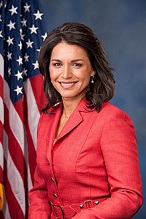
On Jan. 3, 2013 after becoming the youngest woman elected to a U.S. state legislature in 2002, Am. Samoa-born Tulsi (Hindi "basil") Gabbard (1981-) becomes a Dem. U.S. rep. for Hawaii (until ?) , going on to support Socialist Bernie Sanders for U.S. pres. in 2016 and snub Hillary Clinton, ending up too conservative for Dems. and too liberal for Repubs.?; on Jan. 11, 2019 she announces her candidacy for the Dem. nomination for U.S. pres. in 2020.
On Apr. 15, 2013 the first NASA Hawaii Space Exploration Analog and Simulation (HI-SEAS) mission begins, with eight food scientists staying on Mauna Loa in Hawaii (alt. 8.2K ft. or 2.5km) for 120 days (until Aug. 13, 2013) in a Mars-like environment; HI-SEAS II sees six people try it from Mar. 28, 2014-July 25, 2014; HI-SEAS III sees six people try it from Oct. 15, 2014-June 13, 2015; HI-SEAS IV runs from Aug. 29, 2015 to Aug. 28, 2016; HI-SEAS V runs from Jan. 19, 2017-Sept. 18, 2017; HI-SEAS VI in 2018.
On Nov. 12, 2013 the U.S. Army hosts the Chinese Red Army in Hawaii for "simulating humanitarian assistance and disaster relief to a fictional third country".
On Nov. 12, 2013 the senate of Hawaii votes to legalize same-sex marriage, making Hawaii state #15; after being signed by Gov. Neil Abercrombie on Nov. 13, it takes effect Dec. 2, with Pres. Obama uttering the soundbyte that the move "exemplifies the values we hold dear as a nation."
In Oct. 2014 after protests by nativists who claim they want to build it on sacred land, the $1.5B Thirty Meter Telescope (TMT) on Mauna Kea, Hawaii is delayed by the courts, with each new attempt to build it being blocked by more protests (Apr. 2 and June 24, 2015); in Dec. 2015 the Hawaiian Supreme Court invalidates the building permits.

On Dec. 1, 2014 Pearl City, Hawaii-born Dem. David Yutaka Ige (1957-) becomes gov. #8 of Hawaii (until ?), going on to declare a state of emergency on Oct. 16, 2015 over the homelessness problem and sign two bills committing the state to meeting Paris Climate Agreement targets regardless of Pres. Trump's decision to withdraw the U.S. from it.
On May 17, 2015 a U.S. MV-22 Osprey crashes ("hard-lands") at Bellows AFB, Hawaii, killing one Marine and injuring 21; a 2nd Marine dies on May 20.
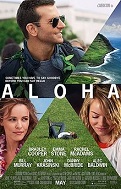
On May 27, 2015 Cameron Crowe's Aloha (Columbia Pictures) debuts, starring Bradley Cooper as military contractor Brian Gilcrest, who works for billionaire Carson Welch (Bill Murray) to develop a new space center in Hawaii, hooking up with USAF Capt. Allison Ng (Emma Stone); Rachel McAdams plays Tracy Woodside, wife of John "Woody" Woodside (John Krasinski), whose eldest daughter Grace (Danielle Rose Russell) is Brian's daughter; way too white for Hawaii?; does $26.3M box office on a $52M budget; watch trailer.
On Nov. 27, 2015 after the U.S. Dept. of the Interior proposes a framework for an independent political structure for Native Hawaiians if it "forms a unified government that seeks a formal government-to-government relationship with the United States", the U.S. Supreme Court temporarily blocks a month-long election (Nov. 1-Dec. 1) for delegates to a constitutional convention for the purpose of Hawaiian self-determination after critics call it unconstitutional and racially exclusive.
On Jan. 1, 2016 Hawaii becomes the first U.S. state to raise the legal age for smoking to 21.
On Aug. 26, 2016 Pres. Obama announces an expansion of the Papahanaumokuakea Marine Reserve in Hawaii (created on June 15, 2006 by Pres. George W. Bush to protect the area from commercial fishing) to 583K acres, becoming 2x the size of Tex. and bigger than all other nat. parks combined; 60% of federal waters off Hawaii are now closed to commercial fishing; on Sept. 1 Obama visits it en route to attend the G-20 Summit in China.
On Dec. 27, 2016 Pres. Obama and Japanese PM Shinzo Abe visit the USS Arizona Memorial at Pearl Harbor, Hawaii, becoming the first visit by a Japanese leader since the Dec. 7, 1941 attack.
On Mar. 6, 2017 (Mon.) Pres. Trump signs a revised executive order barring citizens from six Muslim-majority nations from the U.S. for 90 days starting Mar. 16, with Iraq removed; on Mar. 15 his order is blocked by Honolulu, Hawaii federal judge Derrick Kahala Watson, an appointee and Harvard Law School classmate of Pres. Obama, who visited his town 48 hours earlier, and decides to elect himself to the White House in an arrogant abuse of judicial power.
On Apr. 26, 2017 U.S. Adm. Harry Harris, chief of the U.S. Pacific Command speaks to the U.S. House Armed Services Committee, uttering the soundbyte about pesky North Korea: "Kim Jong-Un is clearly in a position to threaten Hawaii today, in my opinion. I have suggested that we consider putting interceptors in Hawaii that... defend [it] directly, and that we look at a defensive Hawaii radar"; currently the U.S. only has interceptors in Calif. and Alaska.

On May 3, 2017 Lost At Sea Women Jennifer Appel and Tasha Fuiava launch their sailing boat Sea Nymph from Hawaii en route 2.7K mi. to Tahiti, getting lost after a storm, then rescued by the U.S. Navy in Oct., causing their stories to be questioned when they fail to use their distress beacon.
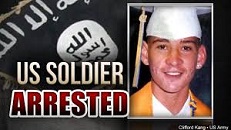
On July 8, 2017 Sgt. 1st Class Ikaika Erik Kang (1983-) is arrested at Schofield Barracks in Hawaii after pledging loyalty to ISIS leader Abu Bakr al-Baghdadi; the court-appointed defense atty. claims service-related mental health problems.
On Aug. 15, 2017 (p.m.) a U.S. Army UH-60 Blackhawk heli goes missing near Oahu, Hawaii during a night training mission, killing all five aboard.
On Dec. 1, 2017 Hawaii resumes monthly air-raid sirens to warn of a nuke attack by North Korea.
On Jan. 13, 2018 a false missile alert is sent in the Hawaiian Islands, causing panic until it is canceled after 38 min.
On Apr. 12, 2018 Hawaii gov. David Ige signs HB2739, an assisted suicide law, becoming #8 after Calif., Colo., Mont., Ore., Vt., Wash., and Washington, D.C.; the Hawaii legislature has 25 senators, all Dems., and 51 House members, all except 5 Dems.
On Apr. 14-15, 2018 Kauai, Hawaii receives 30 in. of rain, causing massive flooding, after which on Apr. 16 220 residents are airlifted to safety.
On May 3, 2018 (4:30 p.m.) after a 5.0 earthquake, Mt. Kilauea ("Madame Pele") in Hawaii erupts, causing mass evacuations from 1.5K homes; on May 4 (12:33 p.m.) a 6.9 earthquake centered near Kilauea's S flank causes more damage; on May 11 another 6.9 earthquake (biggest since 1975), threatening the Puna Geothermal Venture geothermal power plant.
On July 16, 2018 a volcanic lava bomb showers a tour boat off the coat of the Big Island of Hawaii, injuring 22 before it can return to Hilo.
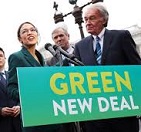

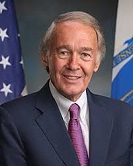

On Feb. 7, 2019 U.S. Dem. Rep. (R-N.Y) Alexandria Ocasio-Cortez (AOC) and U.S. Sen. (D-Mass.) Edward Markey announce their non-binding Green New Deal (GND) resolution (the 21st Cent. Communist Manifesto?), filled with wild impossible demands incl. a "10-year mobilization" on energy, climate, and social issues incl. racism, economic security for those "unwilling to work", net-zero greenhouse emissions "because we aren't sure that we'll be able to fully get rid of farting cows and airplanes that fast", and replacement of air travel with high-speed rail, pissing-off U.S. Sen. (D-Hawaii) (2013-) Mazie Keiko Hirono (1947-), who utters the soundbyte: "That would be pretty hard for Hawaii", and Utah Rep. (R-Utah) Rob Bishop, who utters the soundbyte: "I guess I need to start looking at cutting back on my air travel now as well as curtailing other daily activities like eating hamburgers", saying he needs to "Wake up from this twilight zone; Occasional Castro utters the soundbyte: "Today I think is a really big day for our economy, the labor movement, the social-justice movement, indigenous peoples and people all over the United States of America, because today is the day that we truly embark on a comprehensive agenda of economic, social and racial justice", causing Repubs. call it a "Trojan horse for Socialism" and a "Socialist wish list", claiming it will cost $2T and eliminate 1M jobs, which doesn't stop 2020 pres. candidates N.J. Sen. Cory Booker, Calif. Sen. Kamala Harris, and Mass. Sen. Elizabeth Warren from backing it, part of 70 members of Congress and over a dozen senators who sign on as co-sponsors, while Dem. House Speaker Nancy Speaker ho-hums it as "the Green Dream, or whatever they call it", calling it just one of several proposals to combat global warming; no surprise, the leftist Sierra Club and Green Party endorse it, with the Sierra Club calling it a "bold plan to tackle the climate crisis and inequality - two of the defining crises of our time - at the speed and scale that science and justice demand"; on Feb. 27 U.S. Senate minority leader (D-N.Y.) Chuck Schumer gives a speech criticizing Pres. Trump for not mentioning climate change in his State of the Union Address, with the soundbyte: "Every scientist who has studied it knows that in the next 10, 20, 30, or 40 years climate change is going to evoke huge changes in our country and in our world"; on Feb. 25 the Repub.-aligned think tank Am. Action Forum, run by former Congressional Budget Office dir. Douglas Holtz-Eakin announces that the Green New Deal could cost $93T, incl. $8.3T-$12.3T to eliminate carbon emissions; AOC is a puppet of evil globalist Socialist billionaire George Soros, who wants to destroy the West?
On June 21, 2019 (night) a small skydiving plane crashes near Dillingham Airfield on the North Shore of Oahu, Hawaii, killing nine, becoming the deadliest private plane crash since 2011.
On Dec. 20, 2020 (9:36 p.m. local time) Mt. Kilauea on the Big Island of Hawaii erupts, becoming the biggest since 2018.